The Ultimate Pacific Northwest National Parks Road Trip
One of America’s most diverse regions, the Pacific Northwest (PNW) is home to massive volcanoes, pristine temperate rain forests, high desert plains, sea stack-lined coasts and spectacular mountain ranges.
The amazing national parks of the Pacific Northwest reflect its diversity beautifully.
In this post, I talk about the many must-visit Pacific Northwest national parks and offer a couple of suggested road trip itineraries, based on my many trips around the PNW.
Pacific Northwest National Parks Road Trip
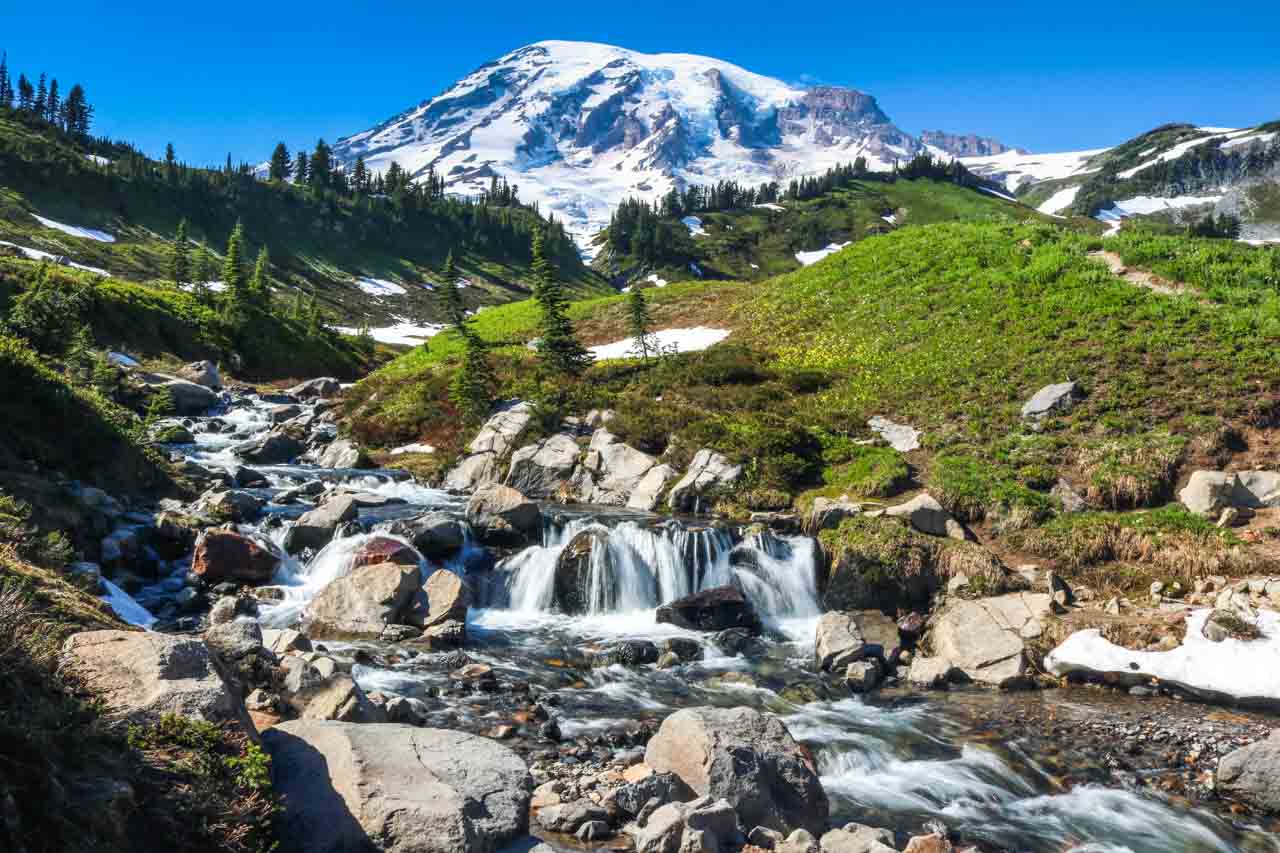
First of all, though, let me start by clarifying the definition of “Pacific Northwest” I’ve used here. There is, after all, not a single clearly outlined conception of this region in the North American northwest.
The most common definition considers the Pacific Northwest to consist of the states of Oregon, Washington and Idaho (as well as Canada’s British Columbia). Broader definitions may also include southeastern Alaska, northern California and even western Montana and Wyoming.
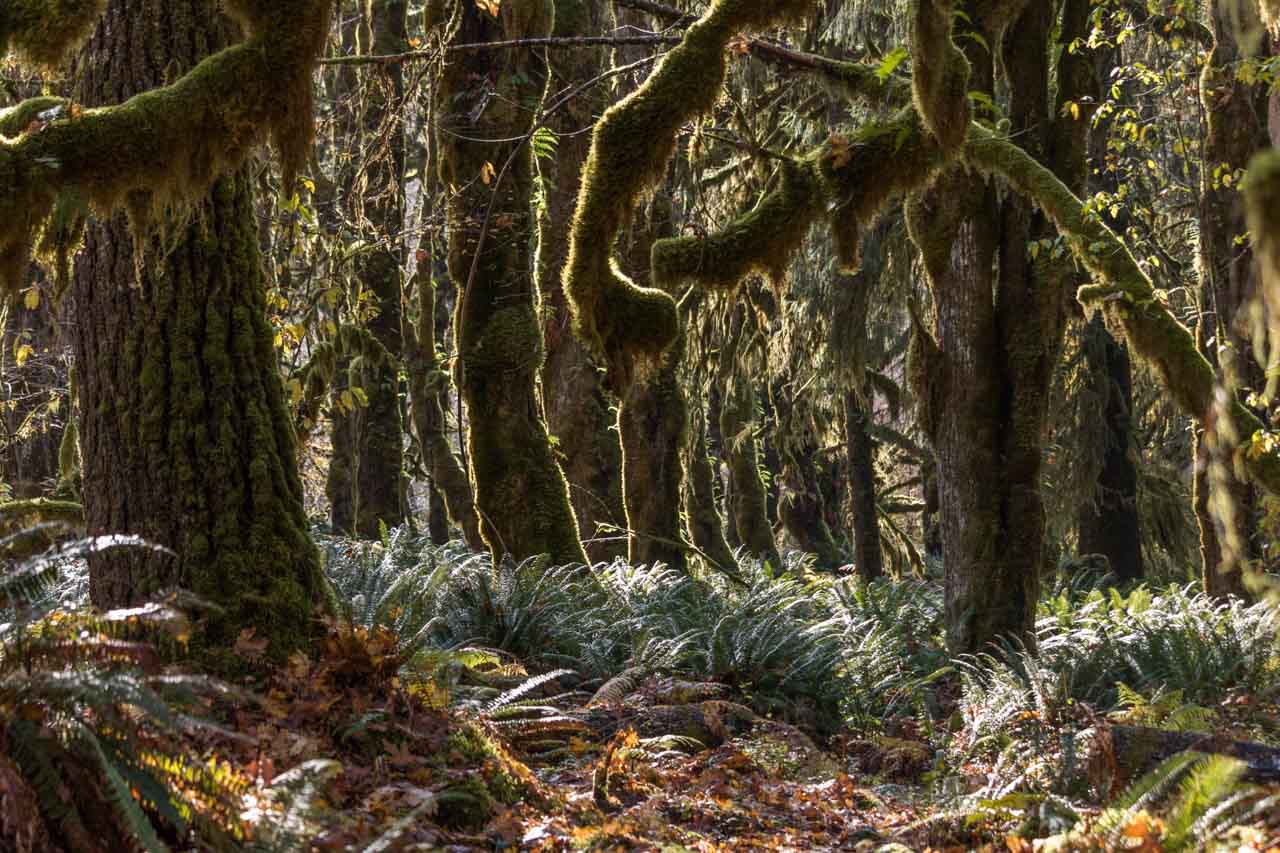
For the purpose of this Pacific Northwest national parks road trip post, I chose the following states as making up the Pacific Northwest: Washington, Oregon and northern California.
This is basically the span of the Cascade Mountains in the United States—the Pacific Northwest is sometimes also referred to as “Cascadia”—and makes for the most convenient road trip opportunities. Washington, Oregon and northern California also have similar landscapes, natural features and ecosystems.
The vast majority of the national parks in the Pacific Northwest are either in the Cascade Range or along the Pacific Coasts of Washington, Oregon and northern California. This offers amazing opportunities for one-way road trips or longer loops.
No matter how much time you have—whether it’s a week or a month—you can explore several, if not all, of the Pacific Northwest national parks on a world-class road trip.
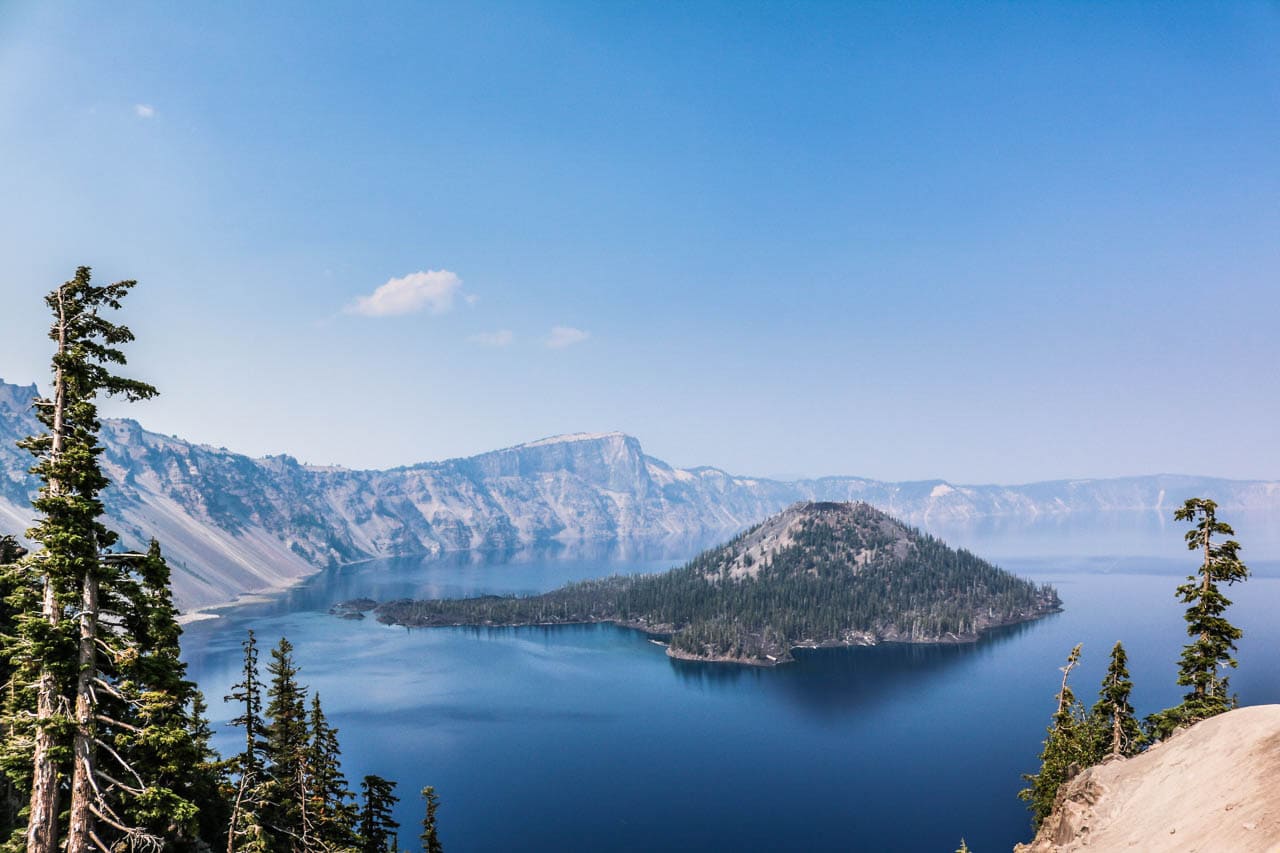
This Pacific Northwest national parks road trip post contains affiliate links. You can read more about our Terms of Use / Disclosure here.
12+ National Parks in the Pacific Northwest
The following overview of the national parks of the Pacific Northwest is roughly from north to south, from Washington, through Oregon, to northern California.
Note that this is not necessarily the precise order in which you’ll want to do your road trip, though. You can find a couple of specific road trip itinerary suggestions after the descriptions of the individual parks.
Also, a few of the destinations below are not managed by the National Park Service, but by the U.S. Forest Service.
The reason I decided to include them is because they’re both amazing places to visit in the Pacific Northwest and part of America’s extensive national public lands system.
Olympic National Park, Washington
- Highlights: Alpine peaks, temperate rain forests, rugged coastal scenery, waterfalls, lakes, and abundant wildlife
- How long to stay: 4 days
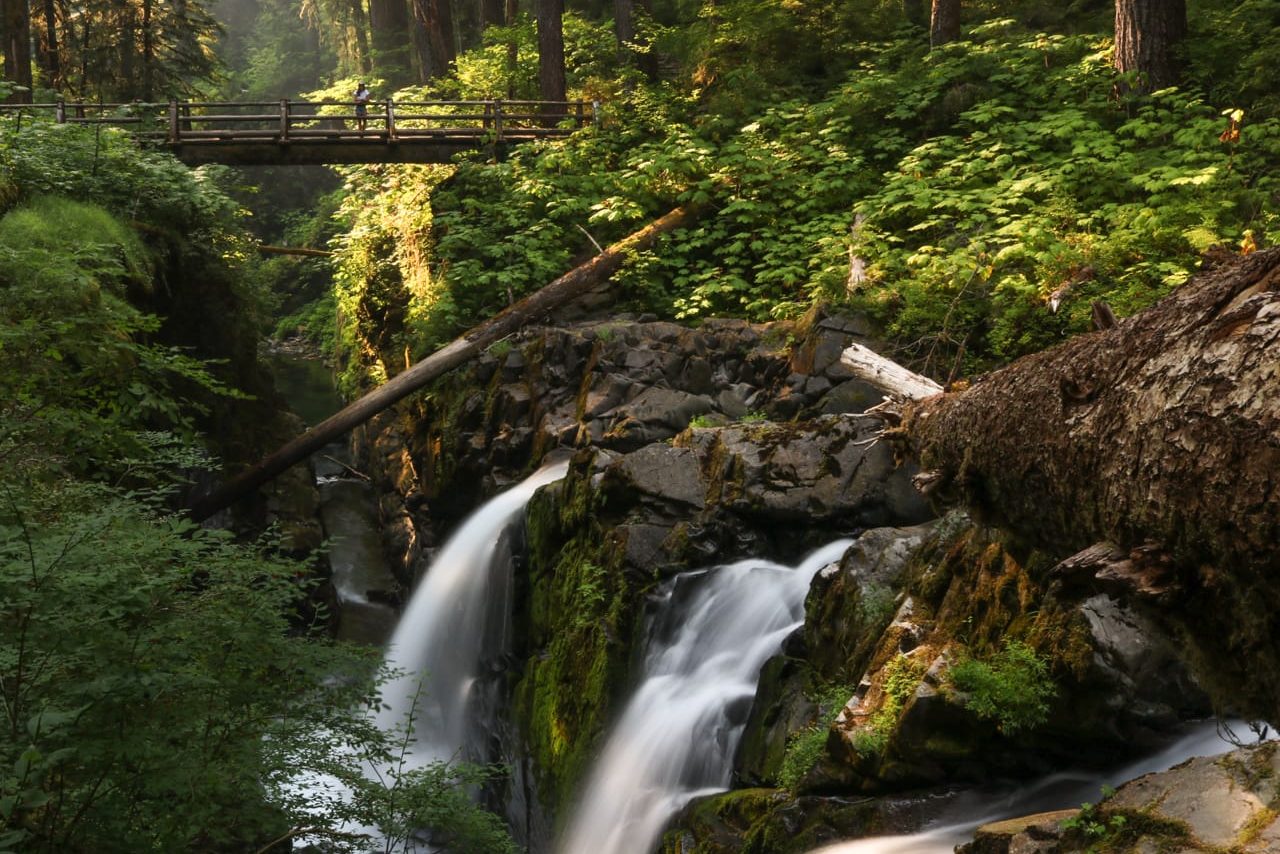
Olympic National Park is a pristine wilderness unlike any other on the planet. Known as “three parks in one”, the park’s ecological variety is of such importance that it’s both an International Biosphere Reserve and a UNESCO World Heritage Site.
In the heart of the park stands 7,980-foot Mount Olympus, dominating the mountain ranges in the interior of the Olympic Peninsula, west of Seattle.
Glaciers radiate down from its slopes toward primeval pine forests, lush rain forests and wide valleys. Rivers and waterfalls abound in this rugged region, while glacial lakes dot lower areas.
A wide range of wildlife and iconic American bird species thrive here as well, most notably large herds of Roosevelt elk, black bears, bald eagles and marmots.
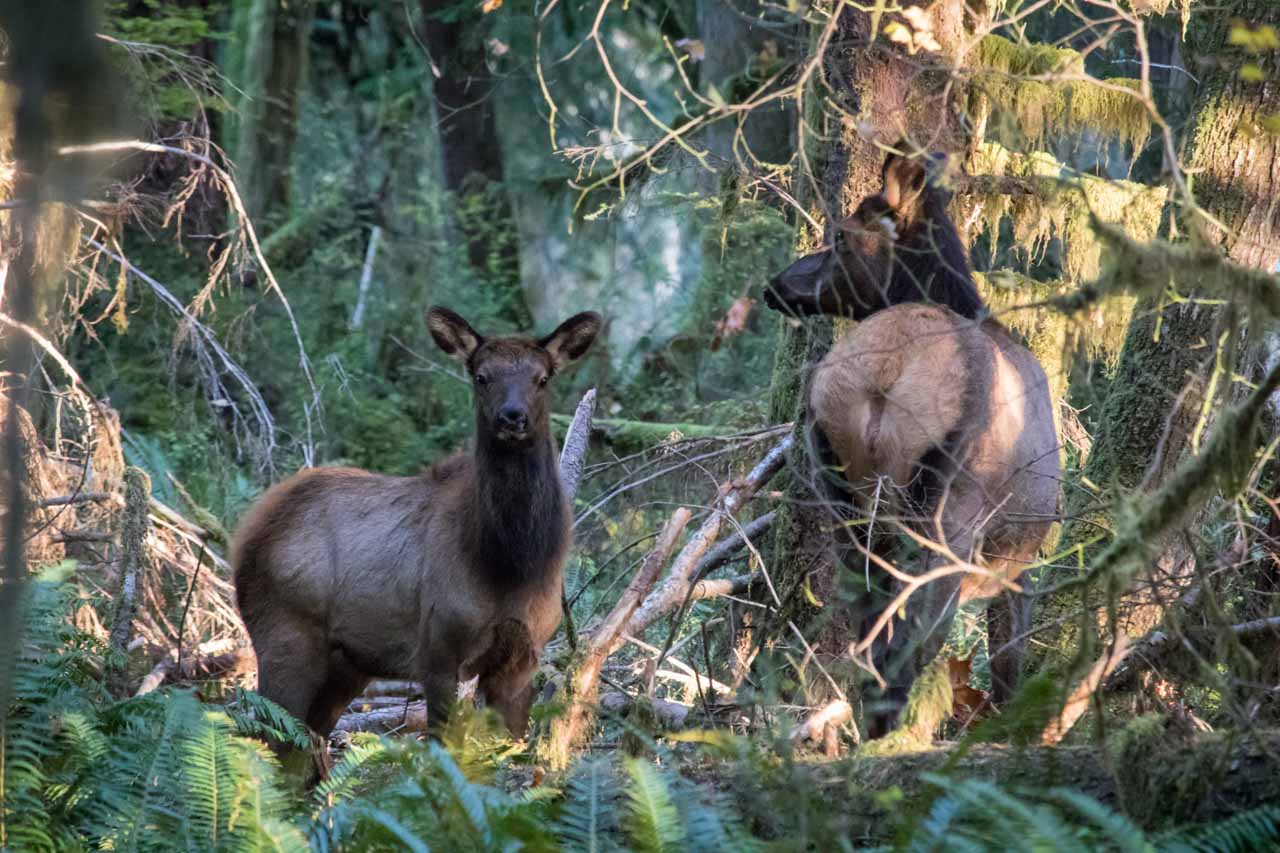
There is enough natural beauty in the Olympic Mountains alone to make it worthy of being a national park on its own. Yet, Olympic National Park’s diversity doesn’t end there. Arguably the park’s most extraordinary feature is its temperate rain forests.
On the western slopes of the mountains, thick blankets of moss drape towering trees. Carpets of ferns cover the forest floor. Mist lingers in the air.
This is one of only a few temperate rain forests left in the world. Moreover, the combined areas of the Hoh Rain Forest, Bogachiel, Queets and Quinault Rain Forests make up the largest rain forest of its kind on Earth.
You can learn much more about the beautiful temperate rain forests of Olympic National Park here.
A number of easy hikes in Olympic National Park‘s rain forests allow you to immerse yourself in this stunning environment.
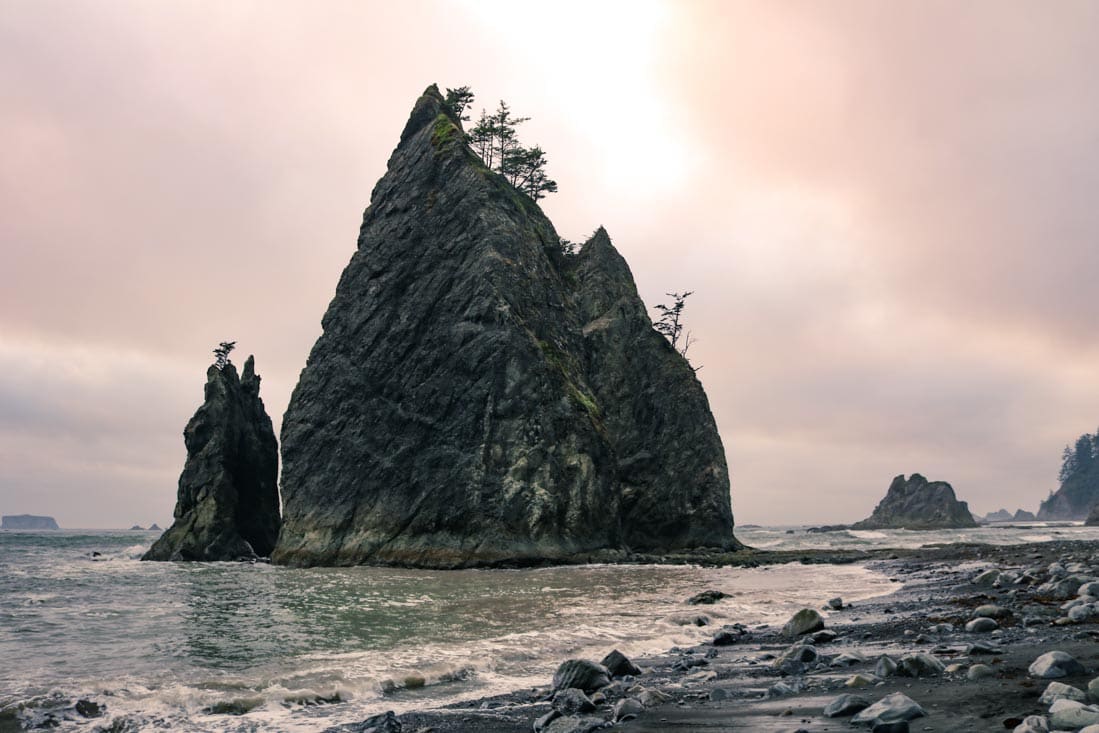
And then there’s the park’s third ecosystem, separated from the two above: the wild Pacific Northwest coast.
A narrow 73-mile-long (117 kilometers) strip of coastal forests, sandy beaches, huge sea stacks, tidepools and headlands, this is the one of longest undeveloped stretches of coastline in the contiguous U.S.
It’s known appropriately as “The Wilderness Coast.”
San Juan Island National Historical Park, Washington
- Highlights: Historic sites, beautiful coastal views, and orca watching
- How long to stay: 1 day
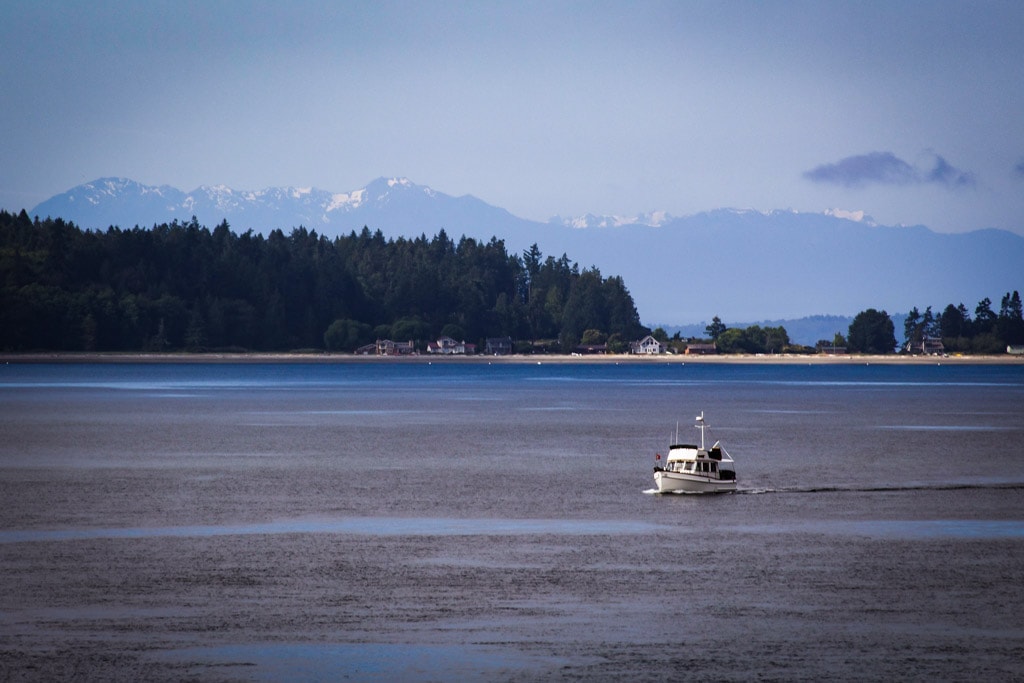
One of the greatest National Park Service sites near Seattle, San Juan Island National Historical Park offers superb outdoor activities and fascinating history.
In 1859, the United States and Great Britain almost started a war over possession of San Juan Island, a crisis that got started by—of all things—the death of a pig.
Important sites in the park commemorate the 12 years of American Army and British Royal Navy presence on the island, located near the United States-Canada border, most notably American Camp and English Camp.
Nowadays, San Juan Island is as peaceful as can be, featuring great views, beautiful shores and, above all, fantastic orca viewing opportunities.
In fact, this park may just be the best place in the entire United States to see killer whales, which is why it’s a must-visit destination on any Pacific Northwest national parks road trip.
North Cascades National Park, Washington
- Highlights: Solitude, turquoise glacial lakes, spectacular mountains, wildlife, boating and hiking
- How long to stay: 2 days
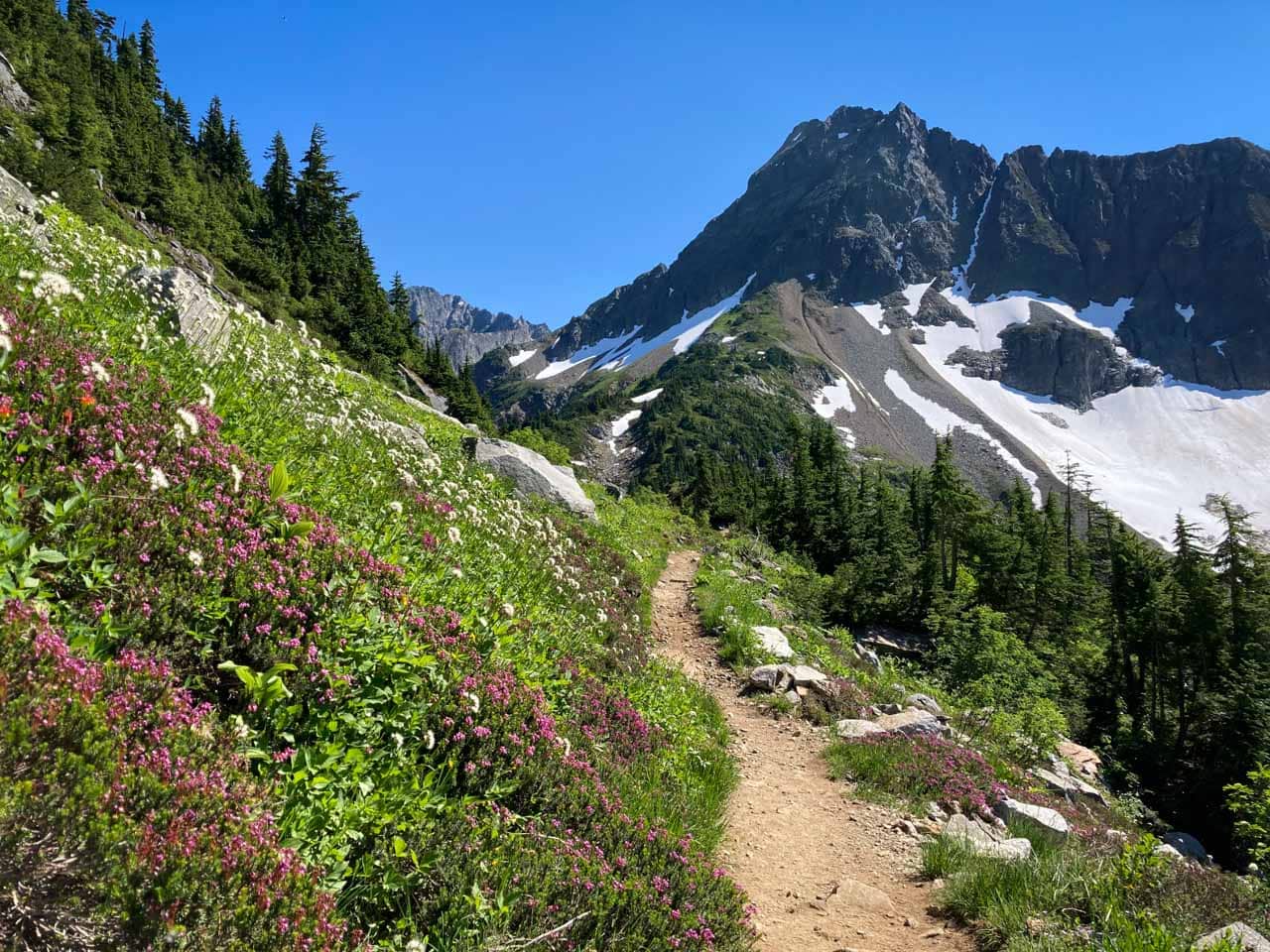
Even though it’s only three hours by car from downtown Seattle, North Cascades National Park boasts some of the most spectacular and remote wilderness areas south of Canada and Alaska.
In this park, finding adventure and solitude is a piece of cake.
North Cascades is also among the least-developed national parks in the U.S., crossed only by scenic Route 20 and home to only a few small towns.
This park encompasses over 300 glaciers, a third of all glaciers in the lower 48 states! This massive amount of ice feeds countless rivers and lakes, occupying upper slopes and flowing through lower valleys.
The landscapes in North Cascades National Park are also beautifully diverse. They include towering mountain peaks, as well as also thundering waterfalls and old-growth forests.
Attracting fewer than 30,000 visitors each year, this park, despite its accessibility, is all about isolation and solitude.
A weekend exploring its landscapes, enjoying scenic drives and hitting a couple of trails is perfect to get a real feel for this wilderness park.
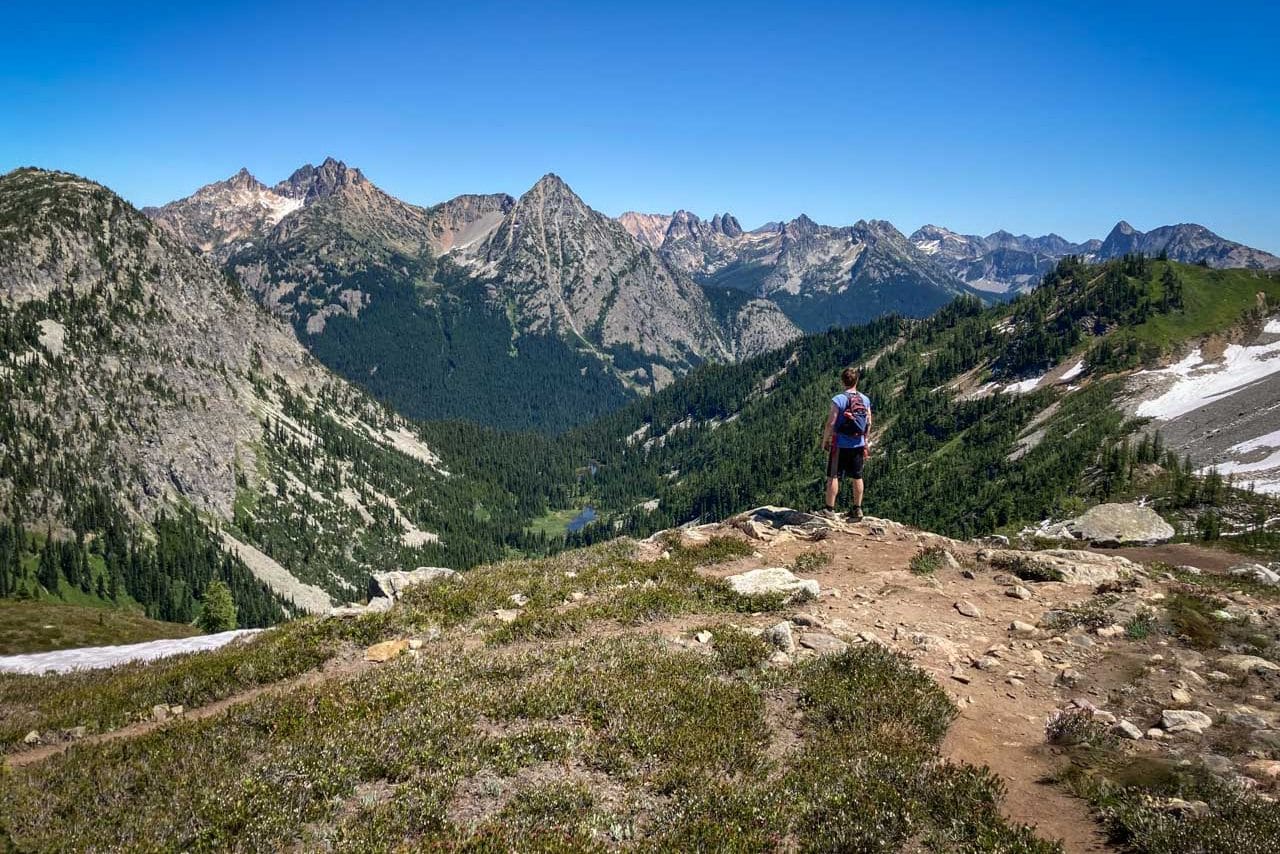
The main features of the North Cascades are endless series of sawtooth-like peaks, stunningly blue alpine lakes, and lots of wildlife.
In fact, this is one of only a few national parks that have grizzly bears in the lower 48 states. That said, though, the North Cascades grizzly bear population is really small and sightings are extremely uncommon.
Other high-profile mammals that call these mountains home include gray wolves, black bears, mountain lions, elk and mountain goats.
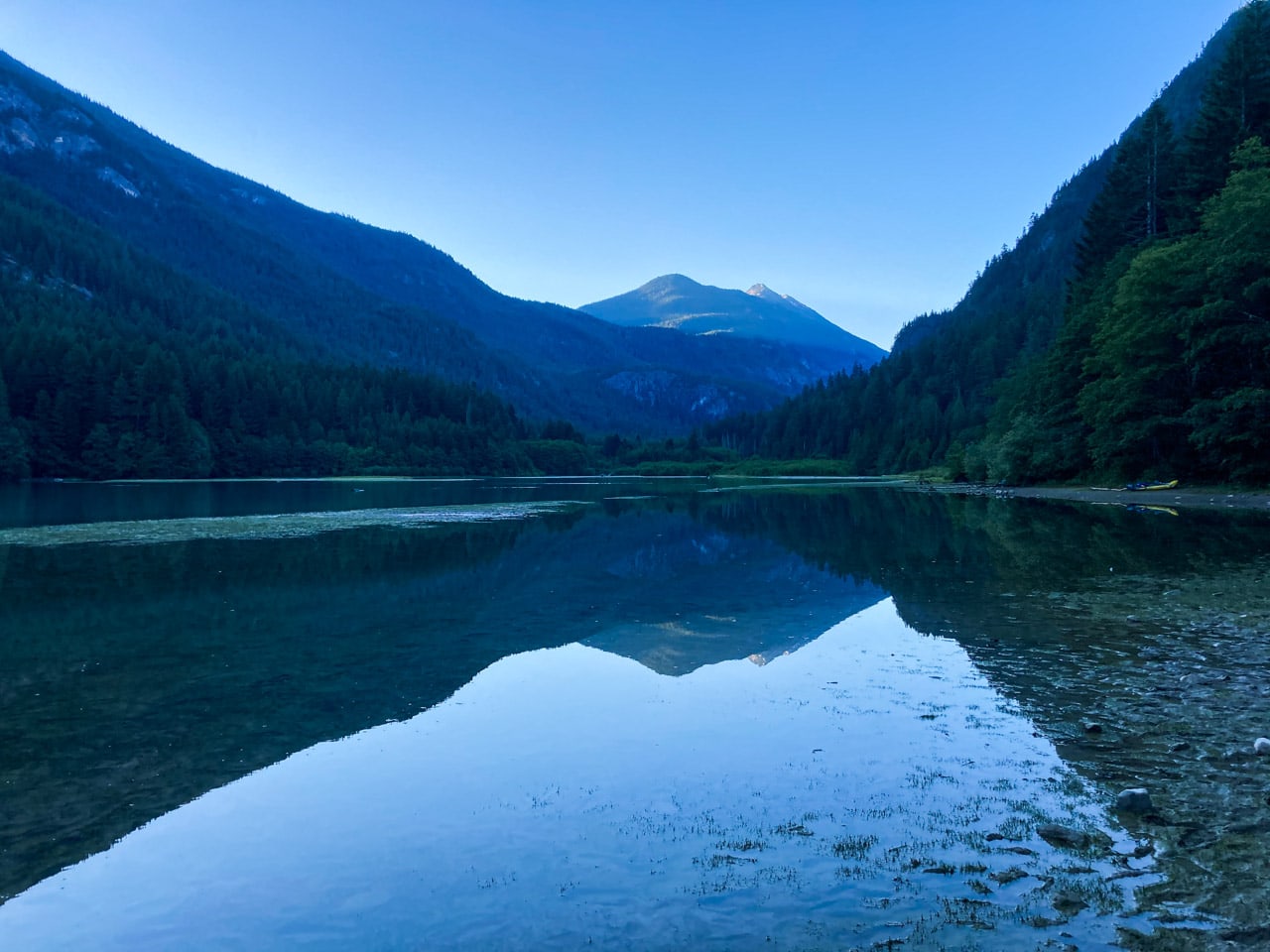
This vast national park complex consists of North Cascades National Park itself, but also comprises of the Ross Lake National Recreation Area and the Lake Chelan National Recreation Area.
Mount Rainier National Park, Washington
- Highlights: Tallest mountain/volcano in the Pacific Northwest, massive glaciers, spectacular wildflowers, old-growth forests, still alpine lakes, and world-class hiking
- How long to stay: 3 days
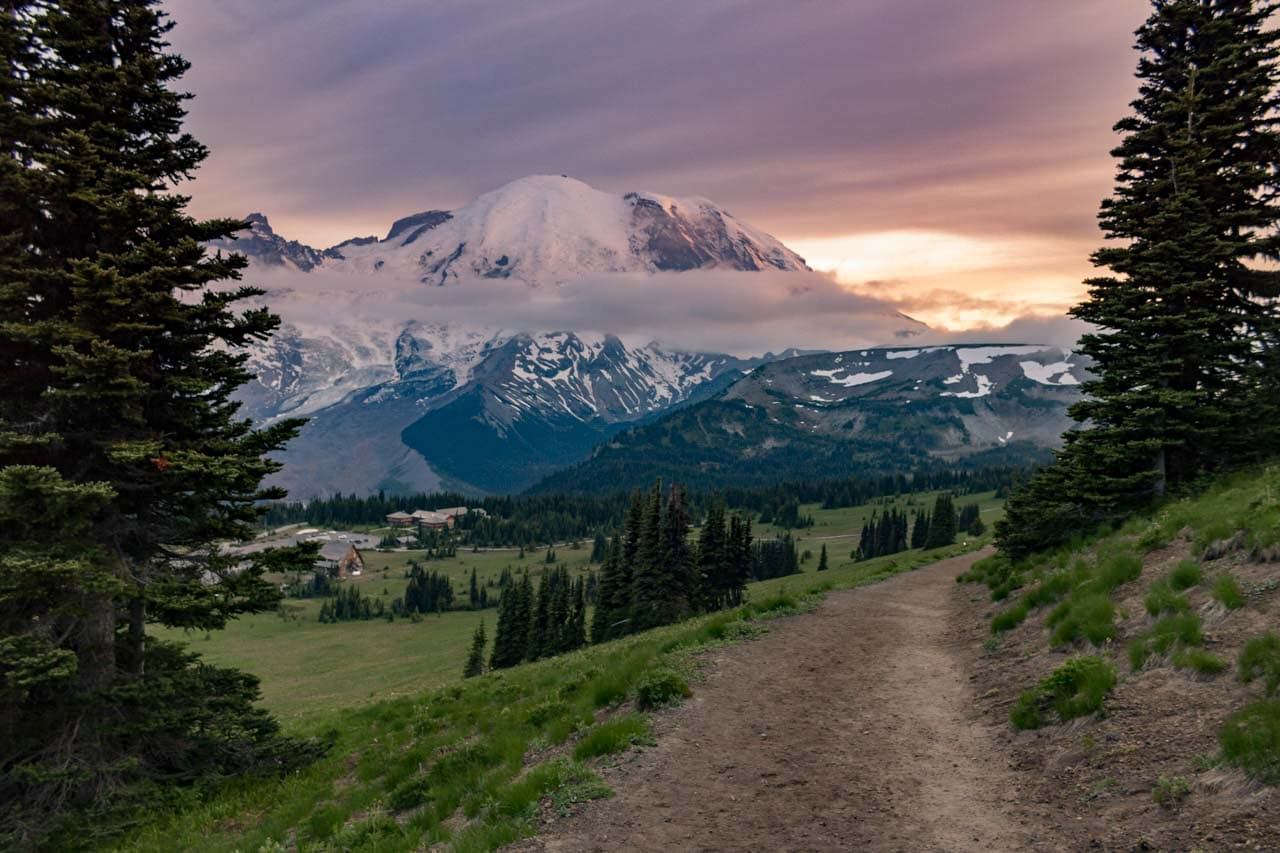
Rising 14,410 feet toward the often-cloudy Pacific Northwest sky, Mount Rainier dominates the landscape in central Washington State. This national park is roughly halfway between Seattle and Portland and easily accessible from both major cities.
Moreover, this mighty active volcano is so prominent—the highest peak in the Cascade Range—that it’s an integral part of the skyline of Seattle. It’s also visible from certain viewpoints near Portland.
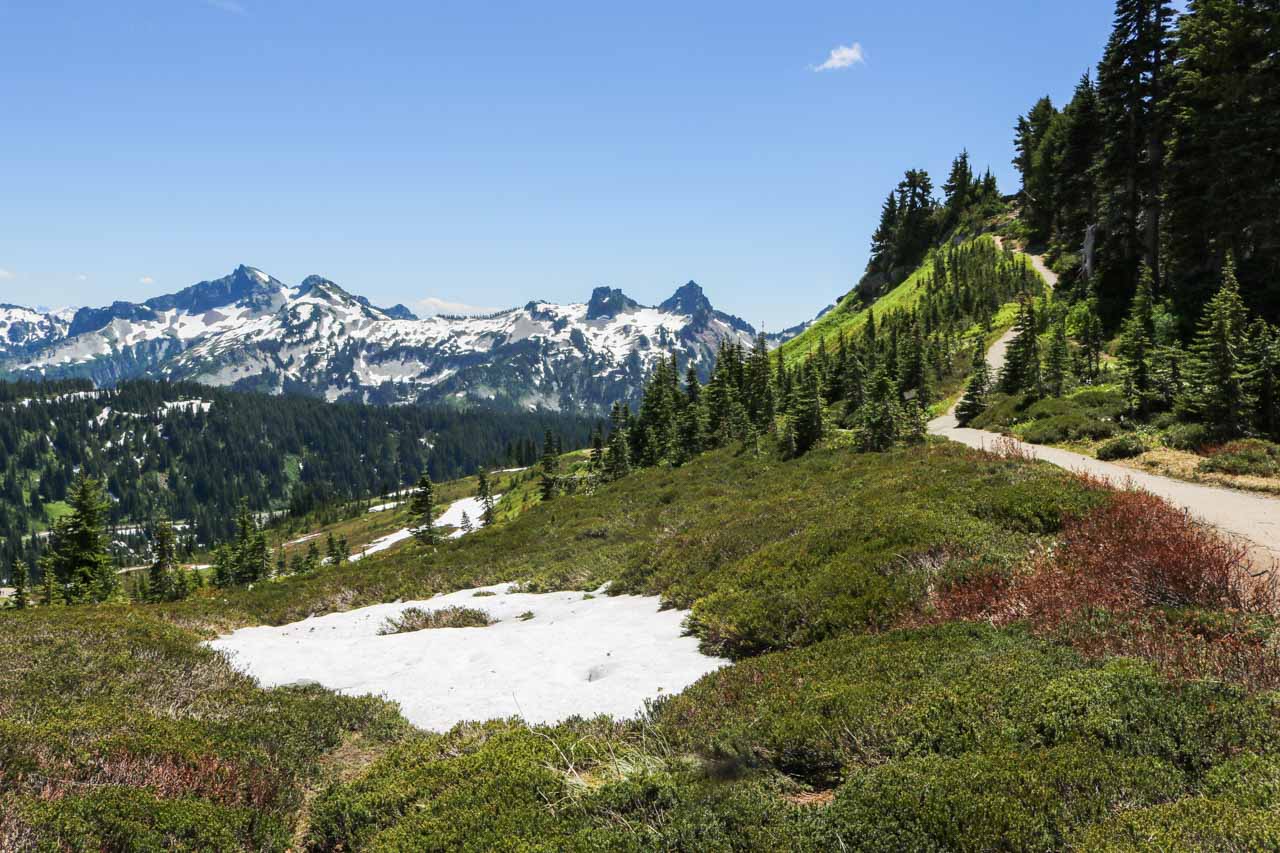
Mount Rainier National Park encompasses everything from old-growth forests to gorgeous subalpine wildflower meadows to spectacular waterfalls. While Rainier itself might be the star attraction, I highly recommend exploring some of its other ecosystems as well.
The huge, ancient trees in the Grove of the Patriarchs, for example, are absolutely worth seeing, while the summer wildflowers in the Paradise area are nothing short of breathtaking.
Hiking the Skyline Trail Loop, which starts at the historic and rustic Paradise Inn, is the best way to explore this wonderful alpine area. As you walk this fantastic trail, you’ll have amazing up-close views of Mount Rainier almost the entire way.
Other highlights along the Skyline Trail Loop include gorgeous meadows, beautiful Myrtle Falls and occasional wildlife sightings, such as mountain goats and black bears.
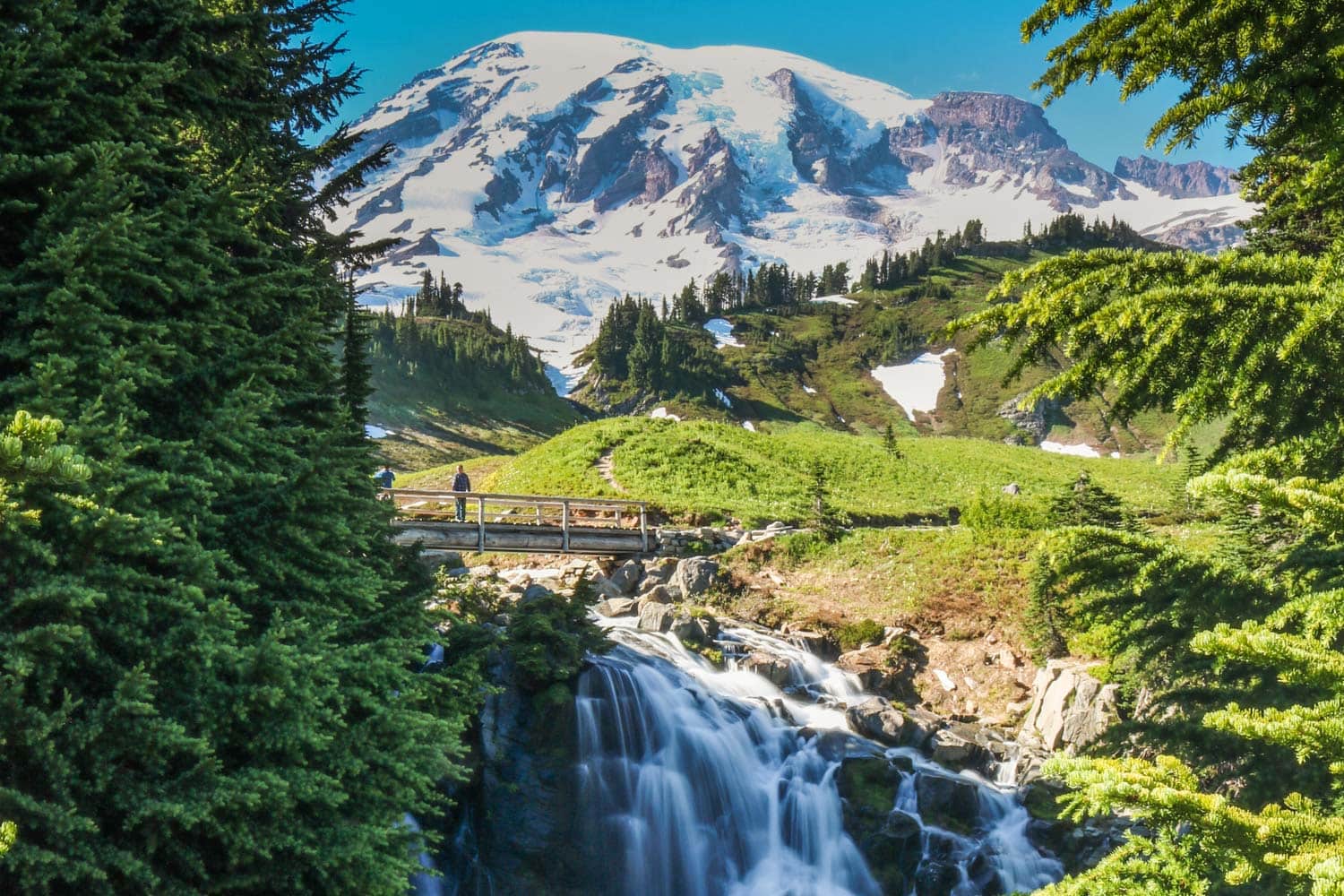
I recommend dedicating three days to this glorious Pacific Northwest national park. That way, you’ll have much more time to explore other areas in the park and hit some of the Mount Rainier trails.
Make sure to explore Tipsoo Lake and the Sunrise Area, too. Both areas are especially spectacular in the fall.
Mount St. Helens National Volcanic Monument, Washington
- Highlights: Volcanic crater, aftermath of a volcanic eruption, spectacular views, and wildflowers
- How long to stay: ½ day
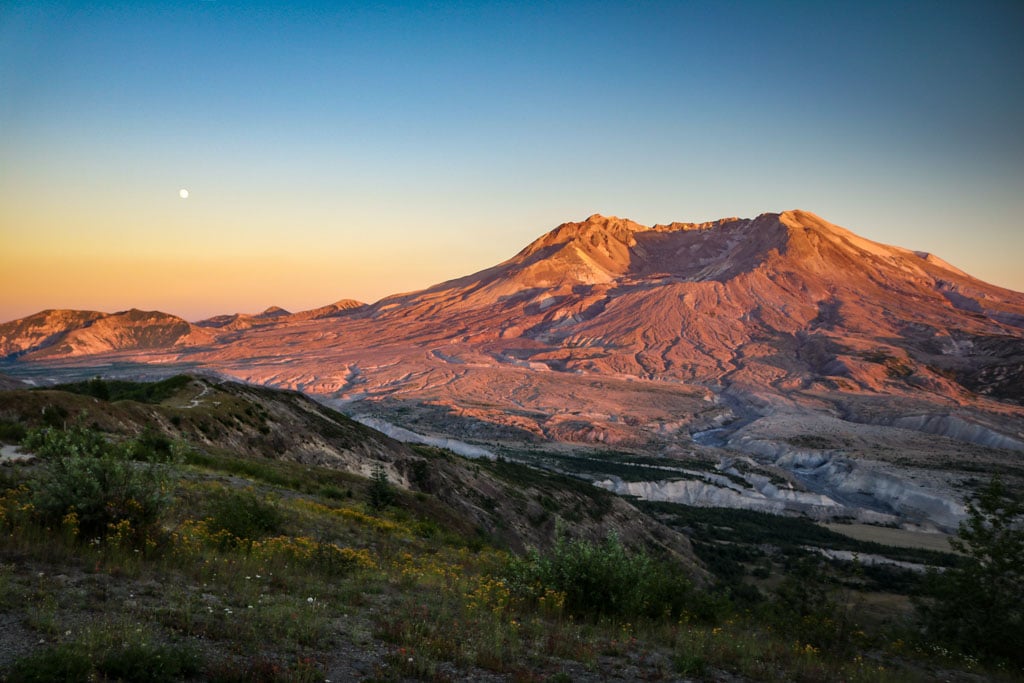
Established in 1982 and managed by the U.S. Forest Service, Mount St. Helens National Volcanic Monument was the first monument of its kind in the United States.
It was created after the massive 1980 eruption of the volcano, which is still the most devastating volcanic event in U.S. history—in terms of both number of deaths and economic destruction. The purpose of this national volcanic monument is multifold, including research, education and recreation.
Because it was protected, the area around Mount St. Helens was able to respond to this natural disaster in a natural way.
Nowadays, you can still see thousands of fallen trees on slopes and floating on lakes, while evidence of enormous landslides and pyroclastic flows is visible all around.
The view of the blown-away crater from the Johnston Ridge Observatory is spectacular. If you’re there in late-spring or early-summer, an amazing display of wildflowers will cover the fertile valleys, slopes and ridges.
If you’re up for a half-day hike, I highly recommend the 8.5-mile round-trip Harry’s Ridge Trail.
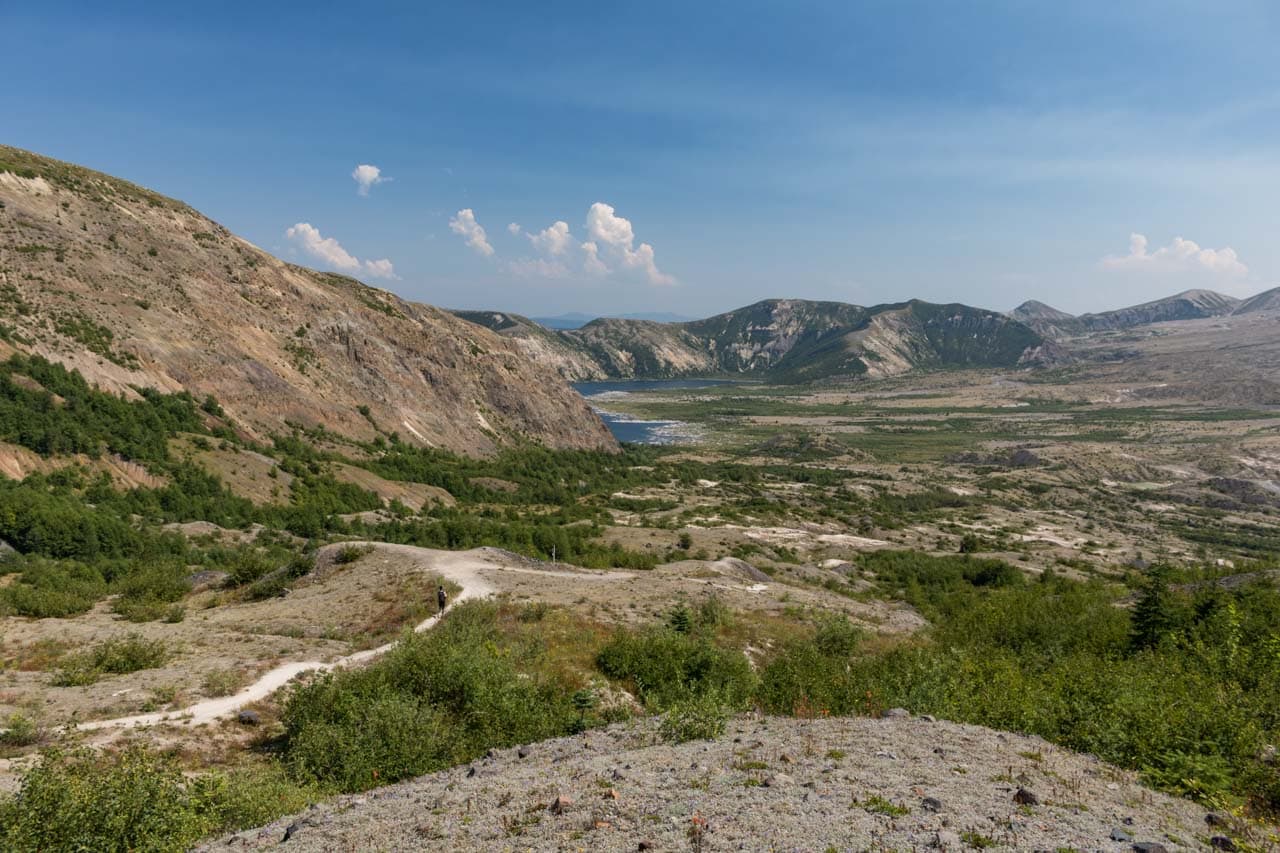
It may not technically be a “national park”—as in, managed by the National Park Service—but this public park is absolutely worth visiting on your Pacific Northwest national parks road trip.
Mount St. Helens National Volcanic Monument lies conveniently between Mount Rainier National Park and Portland, Oregon. In fact, the mountain’s flattened summit is clearly visible from many places in and around Portland.
Fort Vancouver National Historic Site, Washington
- Highlights: Full-scale replica of a 19th-century Hudson’s Bay Company fort
- How long to stay: 2-3 hours
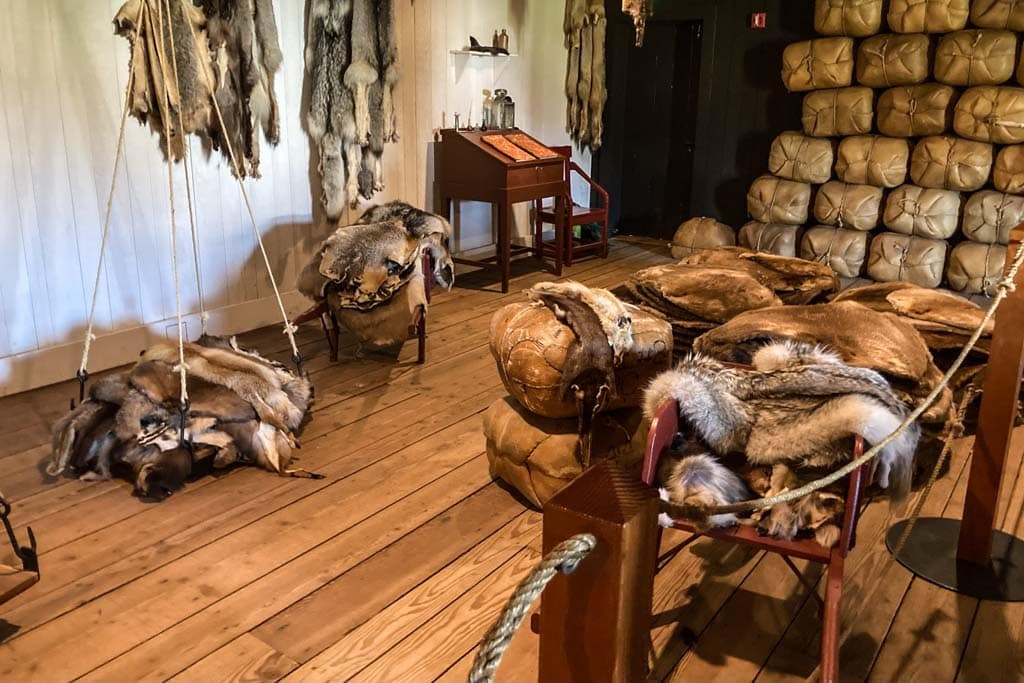
Situated on the Columbia River’s northern bank in Vancouver, Washington, just across the river from Portland, Oregon, Fort Vancouver National Historic Site highlights the story of pioneers, settlers, Native Americans and explorers.
The closest National Park Service unit to Portland, it’s located at the site of the 19th-century headquarters of the Columbia Department of the Hudson’s Bay Company. This former frontier fur trading post grew into a powerful military fort.
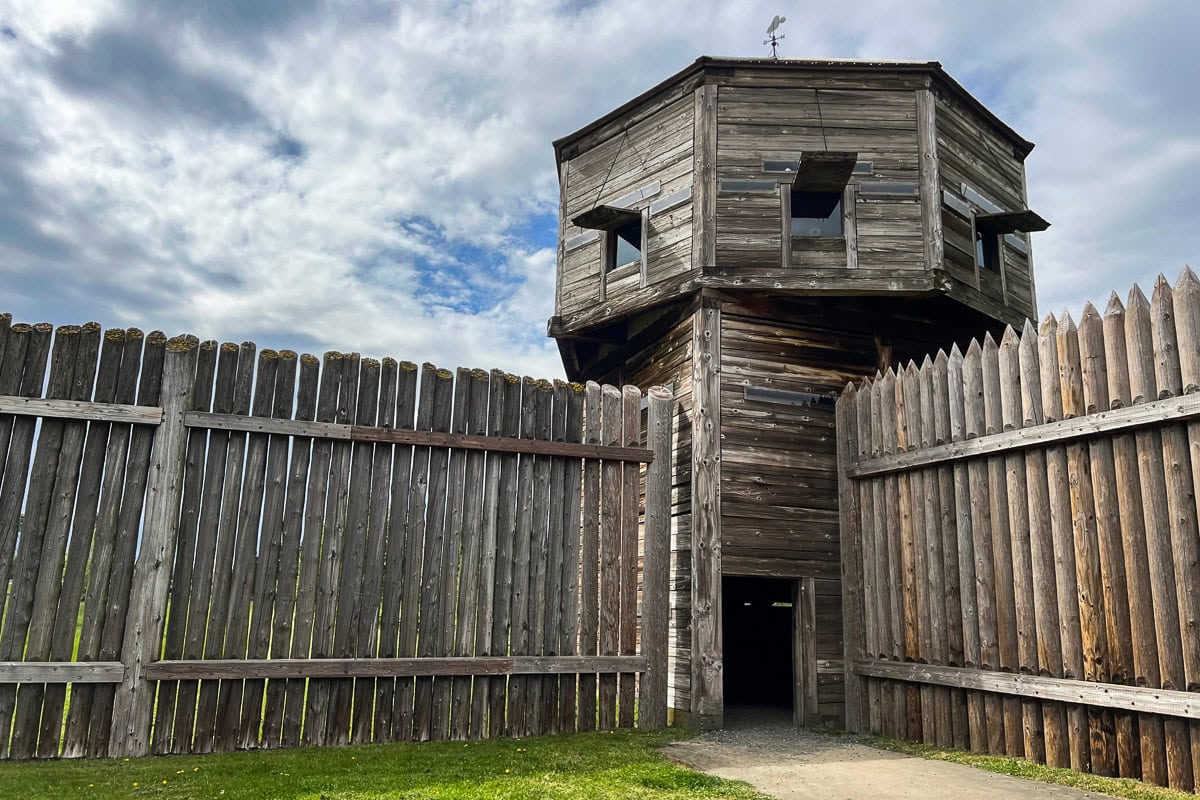
Named after Captain George Vancouver, it was an important crossroads of multiple trade routes, including those coming overland from the East Coast, ships from places as varied as Britain and China, and several Native American trails.
Nowadays, the Fort Vancouver National Historic Site has a full-scale replica of the fort, including buildings like a carpenter shop, bakery, blacksmith shop and kitchen.
Columbia River Gorge National Scenic Area, Oregon
- Highlights: Spectacular waterfalls, abundant wildflowers, lush forests, and great views
- How long to stay: 1 day
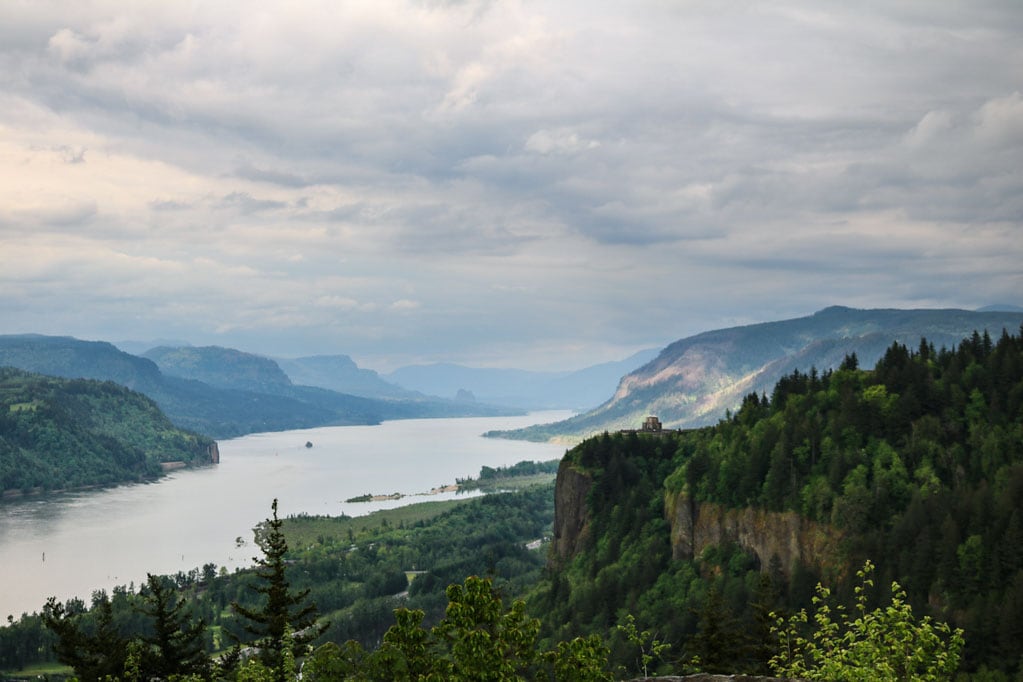
Just like nearby Mount St. Helens, the Columbia River Gorge National Scenic Area is managed by the U.S. Forest Service. Carved through the Cascade Mountains by the mighty Columbia River, the Gorge is home to lush forests and myriad gorgeous waterfalls, including famous Multnomah Falls.
Its verdant western part starts just past Portland’s eastern boundary and runs to charming Hood River, while the eastern part, situated in the mountains’ rain shadow, is characterized by much drier landscapes and canyons.
The eastern Gorge is famous for its spectacular wildflowers in spring. Between April and May, its hills, plateaus and meadows attracts thousands of hikers, photographers and other nature lovers.
The Columbia River Gorge is a super-popular day trip from Portland, but also makes for the perfect transition from Oregon’s vibrant largest city to its high desert interior.

Drive the Historic Columbia River Highway for the best views and scenery, and access to waterfalls and trailheads. I’d recommend planning your visit to this area on a weekday. Weekends and holidays get extremely crowded in this beautiful area.
Alternatively, if you’re after more mountain scenery, you could opt to drive the Mt. Hood Scenic Byway through Mt. Hood National Forest. This brings you right past towering Mt. Hood, as well as lakes, forest scenery and some amazing Mt. Hood hiking trails. The Columbia River Gorge, however, would be my personal first choice.
John Day Fossil Beds National Monument, Oregon
- Highlights: Rich fossil deposits, spectacular multi-colored hills, and extraordinary desert scenery
- How long to stay: ½ day
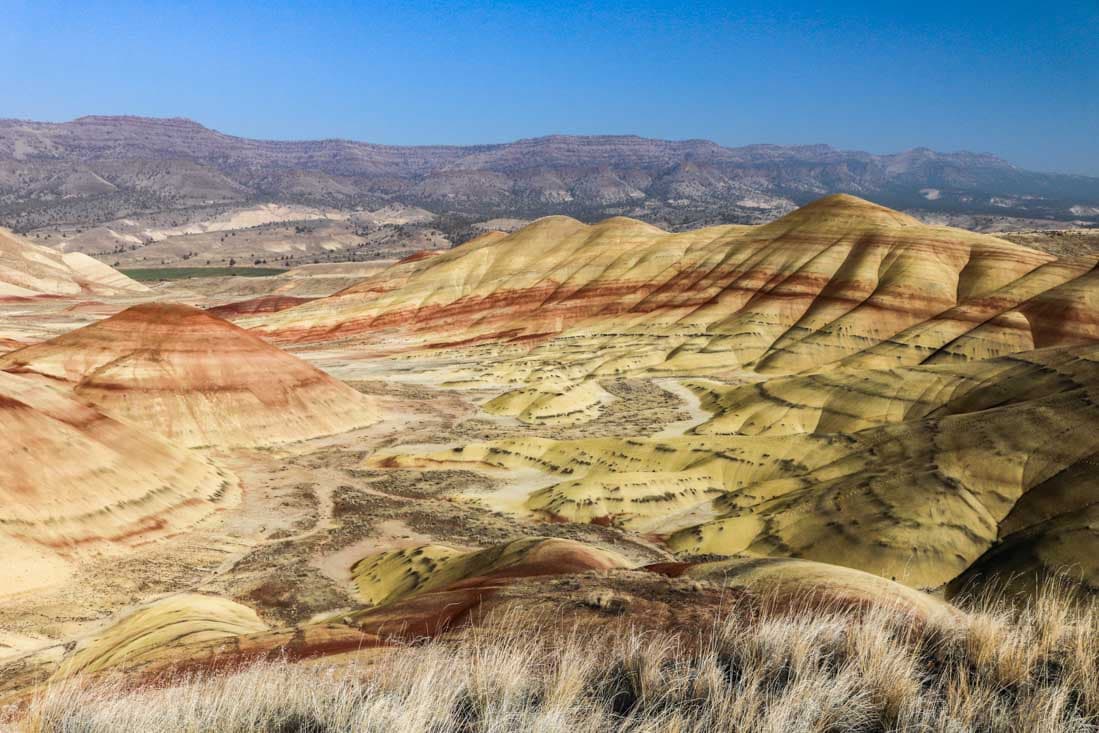
Just like the Columbia River Gorge and Crater Lake (see below), John Day Fossil Beds National Monument is one of the Seven Wonders of Oregon.
It’s unlike anything you might imagine when you think about Oregon national parks—which is most likely wild coasts, thundering waterfalls, rain clouds and evergreen forests.
There’s also an entirely different side to this large state in the American West, though. Located in north-central Oregon, 4.5 hours by car from Portland, this landscape of canyons and cliffs, desert plains and multi-colored badlands is absolutely spectacular.
As its name implies, it’s preserved mainly for its rich fossil deposits. Its fossil record spans no fewer than 40 million years and includes fossils of countless plants and animals, as well as evidence of ancient climate change.
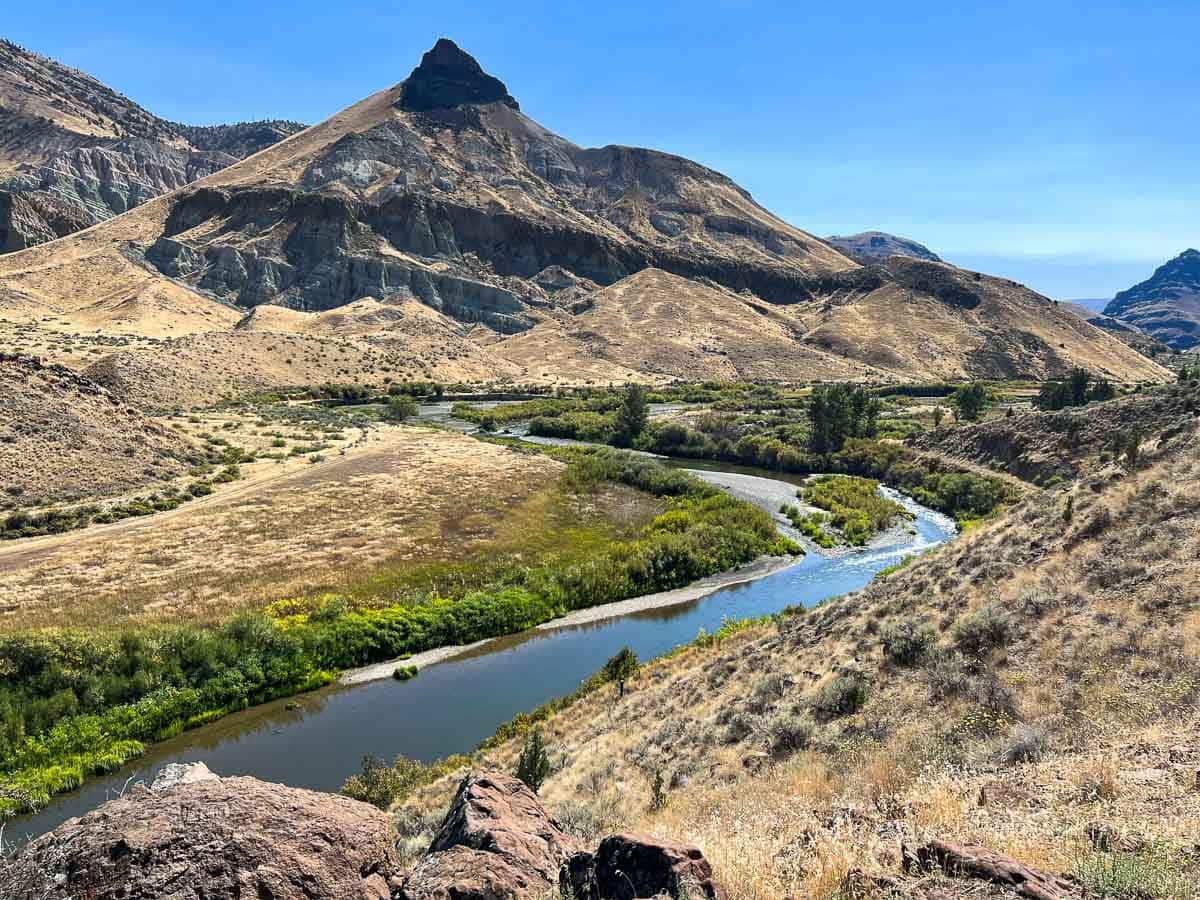
The most popular unit in John Day Fossil Beds National Monument is home to the famous Painted Hills of Oregon, which features stunning multi-colored hills.
Other units are the Clarno Unit and Sheep Rock Unit. Each unit has trails that allow you see these amazing landscapes from up close and learn more about the fossils found here. This is a worthwhile detour on the way from Portland to Crater Lake on your Pacific Northwest national parks road trip.
Deschutes National Forest, Oregon
- Highlights: Beautiful alpine lakes, scenic drives, all kinds of outdoor activities, and volcanoes, including the largest volcano in the Pacific Northwest
- How long to stay: 2 days
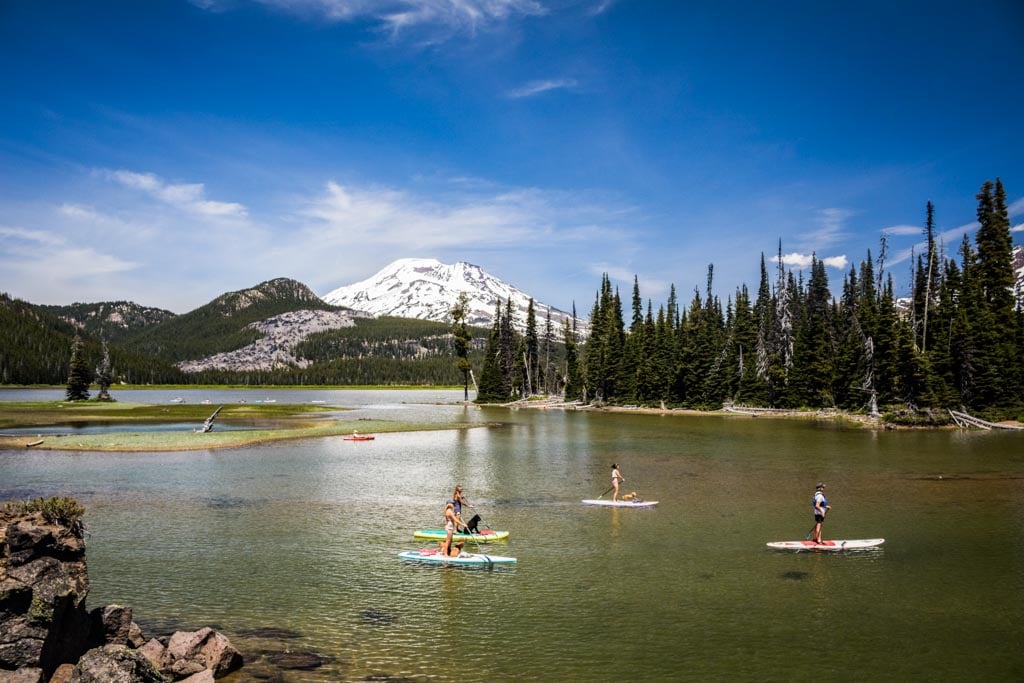
A sprawling national forest in central Oregon, Deschutes National Forest preserves huge tracts of forests, lakes, volcanoes and mountains south(west) of Bend. It’s a dream destination for hikers, kayakers, rock climbers and other adventurists.
Located partially in four Oregon counties—Deschutes, Jefferson, Klamath and Lake—on the eastern slopes of the Cascade Range, this national forest comprises no fewer than 1.8 million acres (7,300 km2).
It’s also home to five designated wilderness areas, all of which also extend into other, adjacent national forests.
It’s amazingly diverse, featuring shimmering lakes and scenic rivers, cinder cones and sweeping summit vistas.
While there are several different areas to explore in Deschutes National Forest, I recommend focusing on the following two. They’re easily accessible from Bend, as well as gloriously beautiful and filled with attractions.
- Cascades Lakes Area (west of Route 97): A series of glorious alpine lakes linked together by the fantastic Cascade Lakes Scenic Byway, great for hiking and boating.
- Newberry National Volcanic Monument (along and east of Route 97): The Newberry Volcano is the largest volcano in the Cascade Range, home to two caldera lakes, cinder cones, lava flows and other awesome volcanic features.
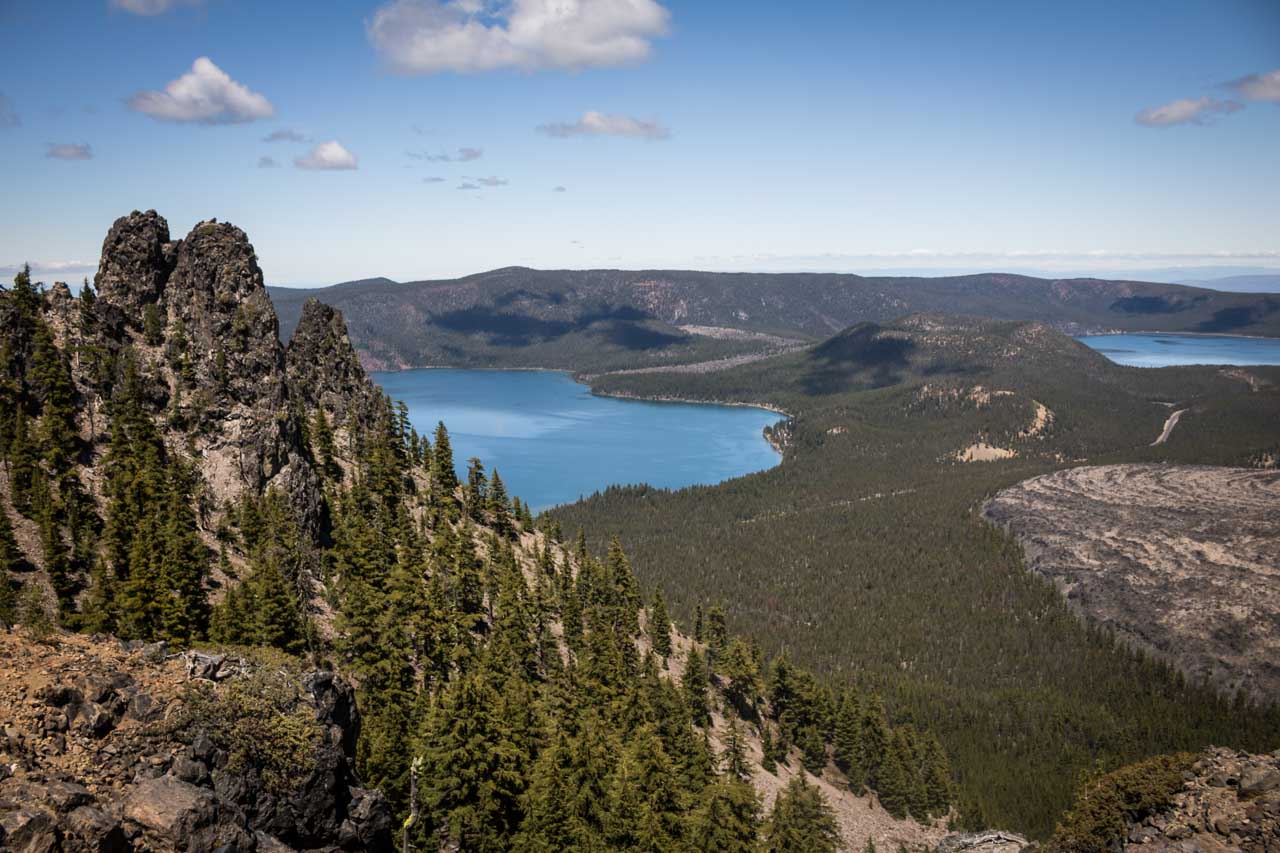
If you decide to make Deschutes National Forest a part of your Pacific Northwest parks road trip, I suggest doing it justice and not simply driving through.
Both the Cascade Lakes Area and the Newberry Volcano deserve at least one full day of your time. You can read about the best things to do in Deschutes National Forest here.
Crater Lake National Park, Oregon
- Highlights: America’s deepest and clearest lake, scenic drive, and stargazing
- How long to stay: 2 days
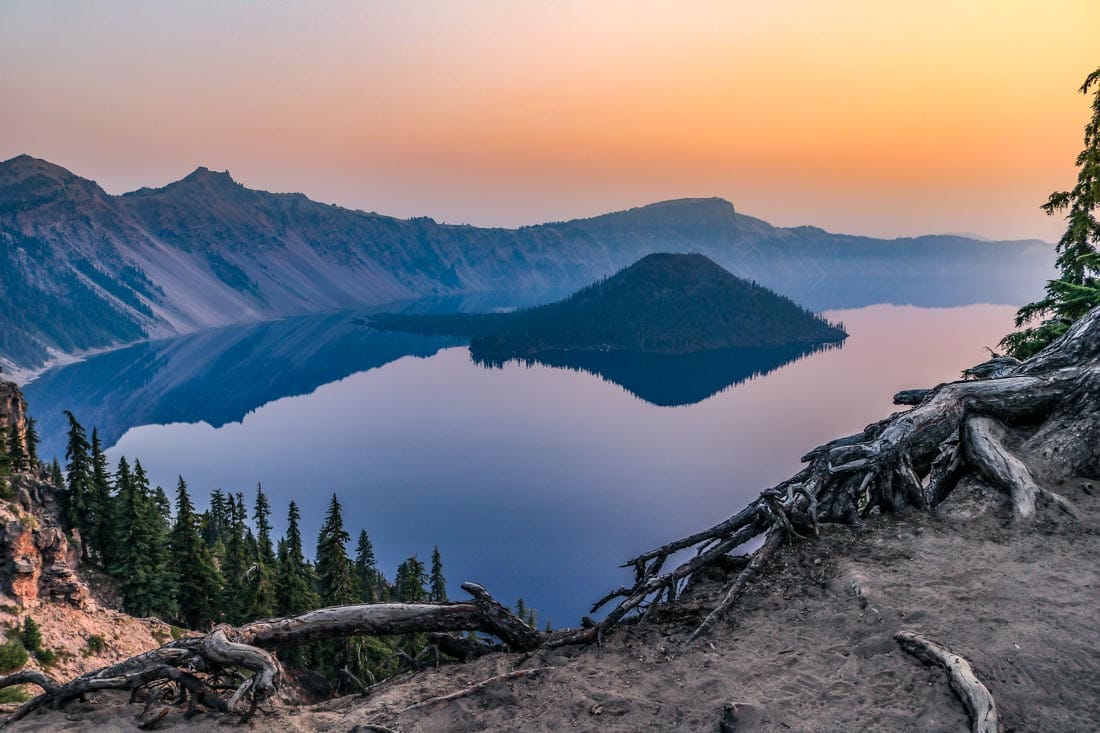
Oregon’s only national park, Crater Lake National Park lies in the southern part of the state. An awe-inspiring, glorious park, it’s centered on eponymous Crater Lake.
This water-filled caldera was created after the massive eruption and collapse of Mount Mazama, once a mighty volcano in the Pacific Northwest, about 7,700 years ago. Although its origins are undeniably violent, Crater Lake is now a prime example of peacefulness and tranquility.
Dependent entirely on rainfall and snow melt as its water sources, the lake has some of the cleanest, and clearest water of any North American lake.
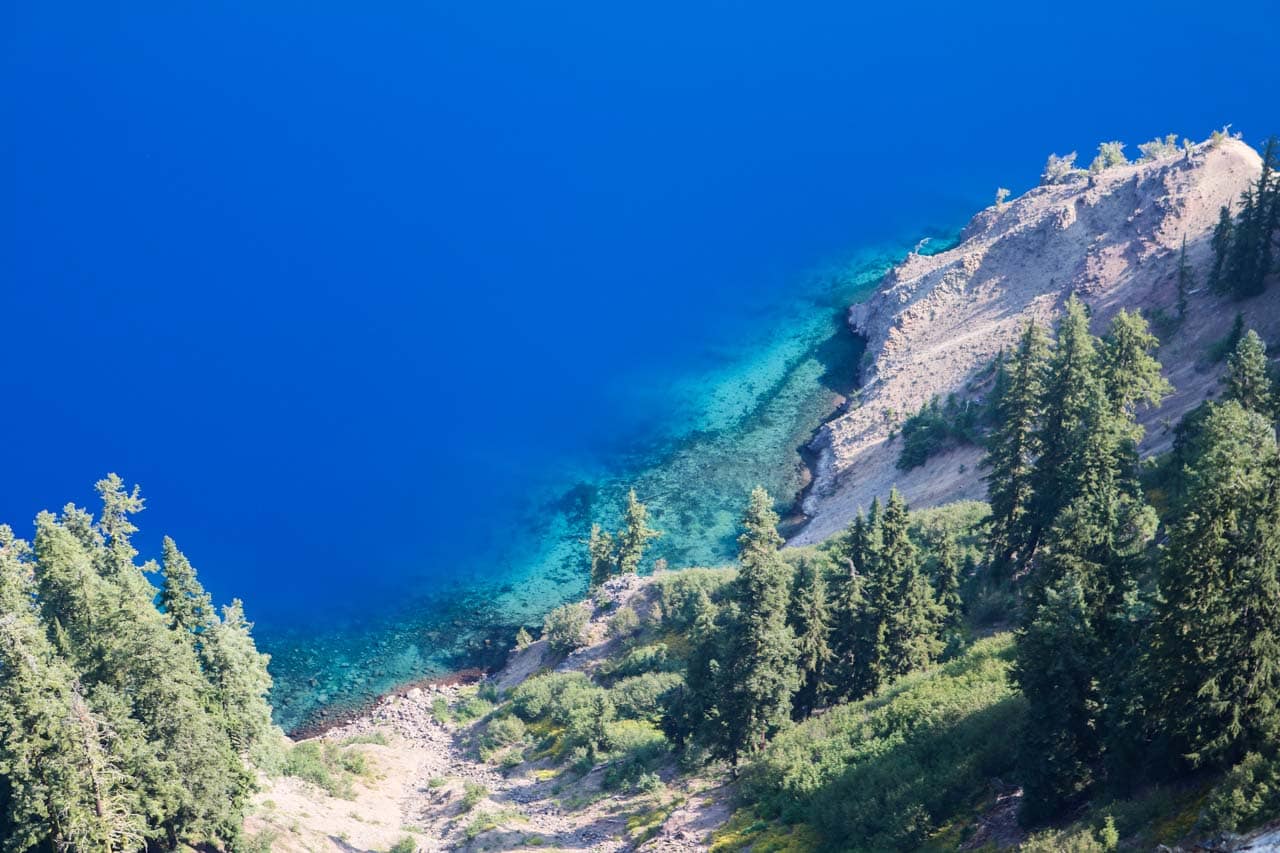
Additionally, it’s also the deepest lake in the U.S.—it’s average depth is 1,943 feet (592 meters). The water surface is usually perfectly still, too, which results in stunning reflections of the caldera walls around it.
That ripple-less water often reflects a blue sky, making it “the bluest lake on earth”, while at night it twinkles with the lights of a thousand stars.
Crater Lake National Park is also super-easy to explore. The scenic Rim Drive encircles the entire lake, offering access to Crater Lake viewpoints and hiking trails.
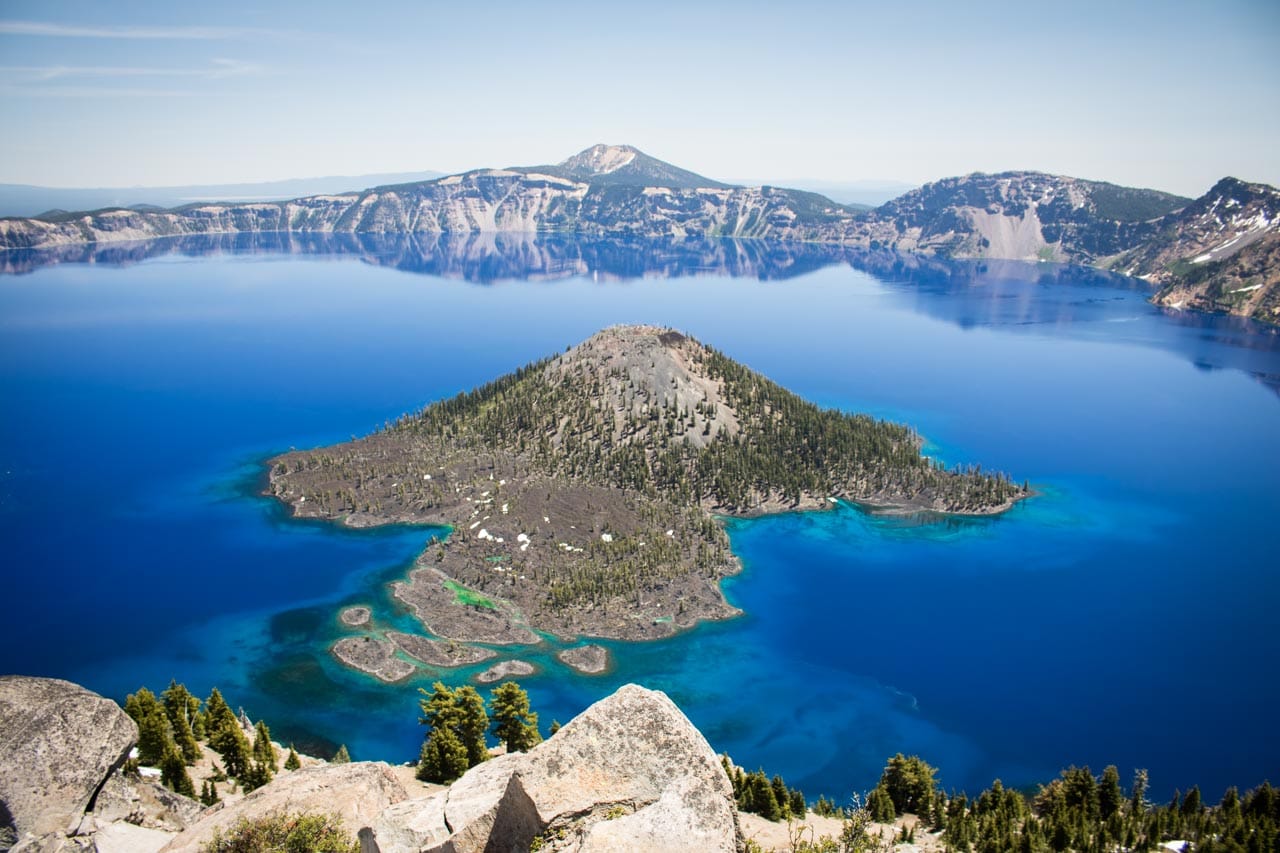
The historic Rim Village is home to the amazing Crater Lake Lodge, while Mazama Village down the road below has cabins, a store, gas station and a large campground.
Oregon Caves National Monument, Oregon
- Highlights: Beautiful marble caves in the Siskiyou Mountains, wildlife watching
- How long to stay: 2-3 hours
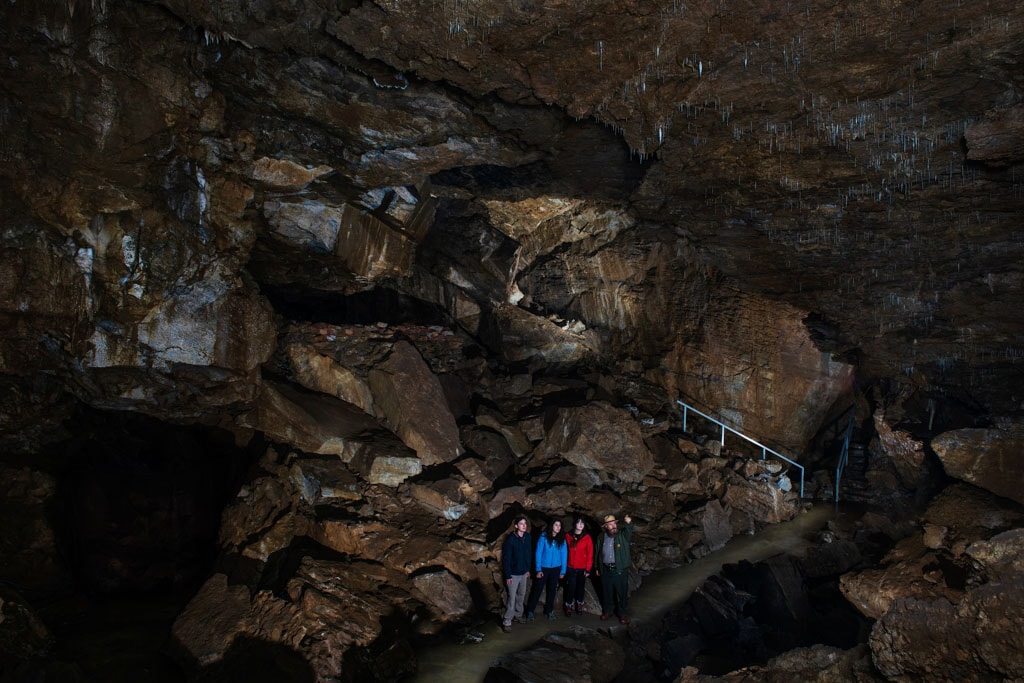
Located deep within southern Oregon’s Siskiyou Mountains lie the renowned Oregon Caves.
These “Marble Halls of Oregon” are home to spectacular marble formations and passageways, a major tourist attraction in this remote part of the Pacific Northwest.
Cave tours are the obvious top attraction here and you can go on Discovery Cave Tours, Candlelight Cave Tour, and Kids and Family Tours. Experienced speleologists can go on off-trail tours, too. Other popular activities at the Oregon Caves are hiking and wildlife watching.
Redwood National Park, Northern California
- Highlights: Some of the world’s largest trees, abundant wildlife, scenic drives, (mountain) biking, and camping
- How long to stay: 3 days
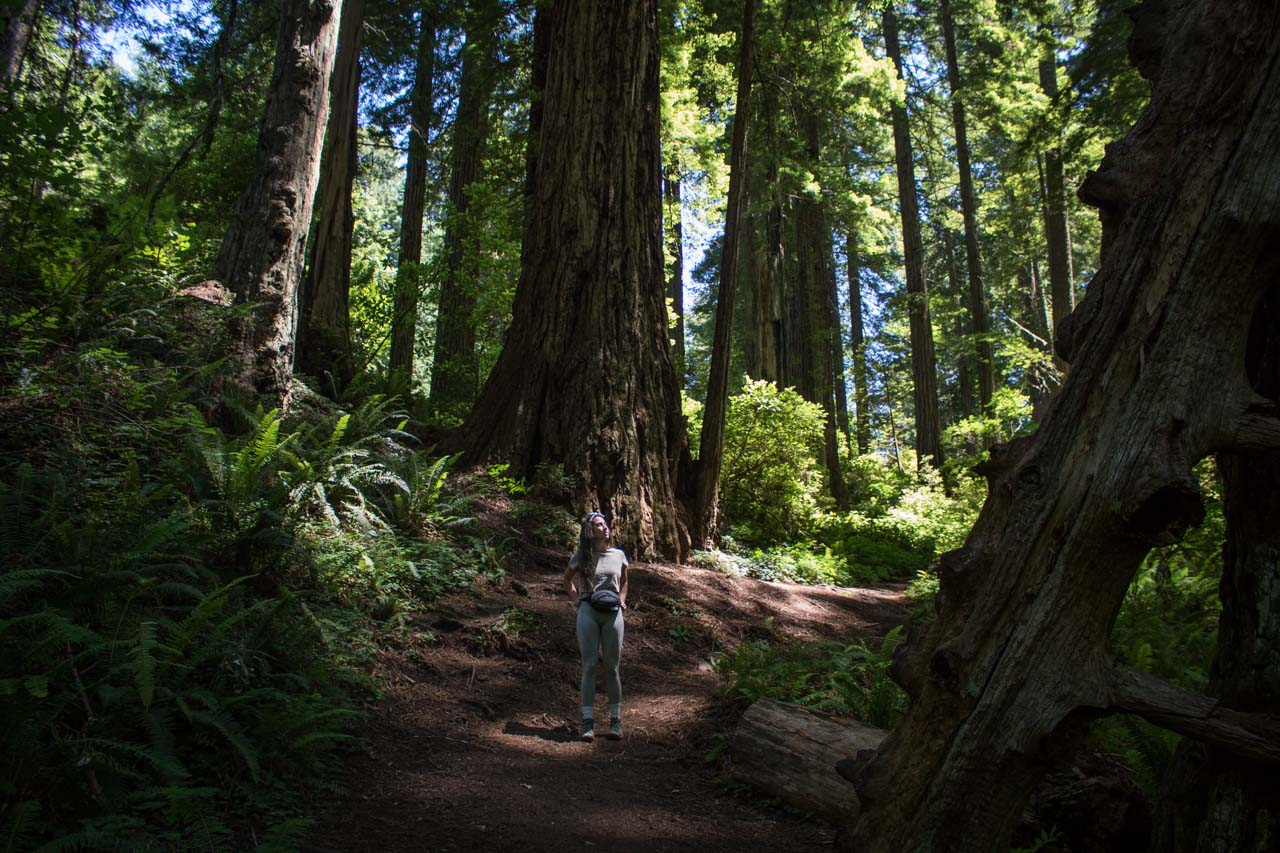
Redwood National Park could be considered one of the most remote national parks on the U.S. West Coast. There aren’t any major cities nearby.
The drive from San Francisco to Redwood National Park is about 5.5 hours, while the nearest other major city, Portland is also approximately 5.5 hours away.
A UNESCO World Heritage Site, the Redwood National and State Parks are certainly a place worth visiting. They’re an essential destination on a Pacific Northwest national parks road trip.
This amazing park complex consists of four parks:
- Redwood National Park
- Jedediah Smith State Park
- Prairie Creek Redwoods State Park
- Del Norte Coast State Park
Together, the Redwood National and State Parks protect no less than 45% of all remaining old-growth coastal redwood (Sequoia sempervirens) forests in the world. These massive trees are some of the tallest, most voluminous and oldest on the planet.
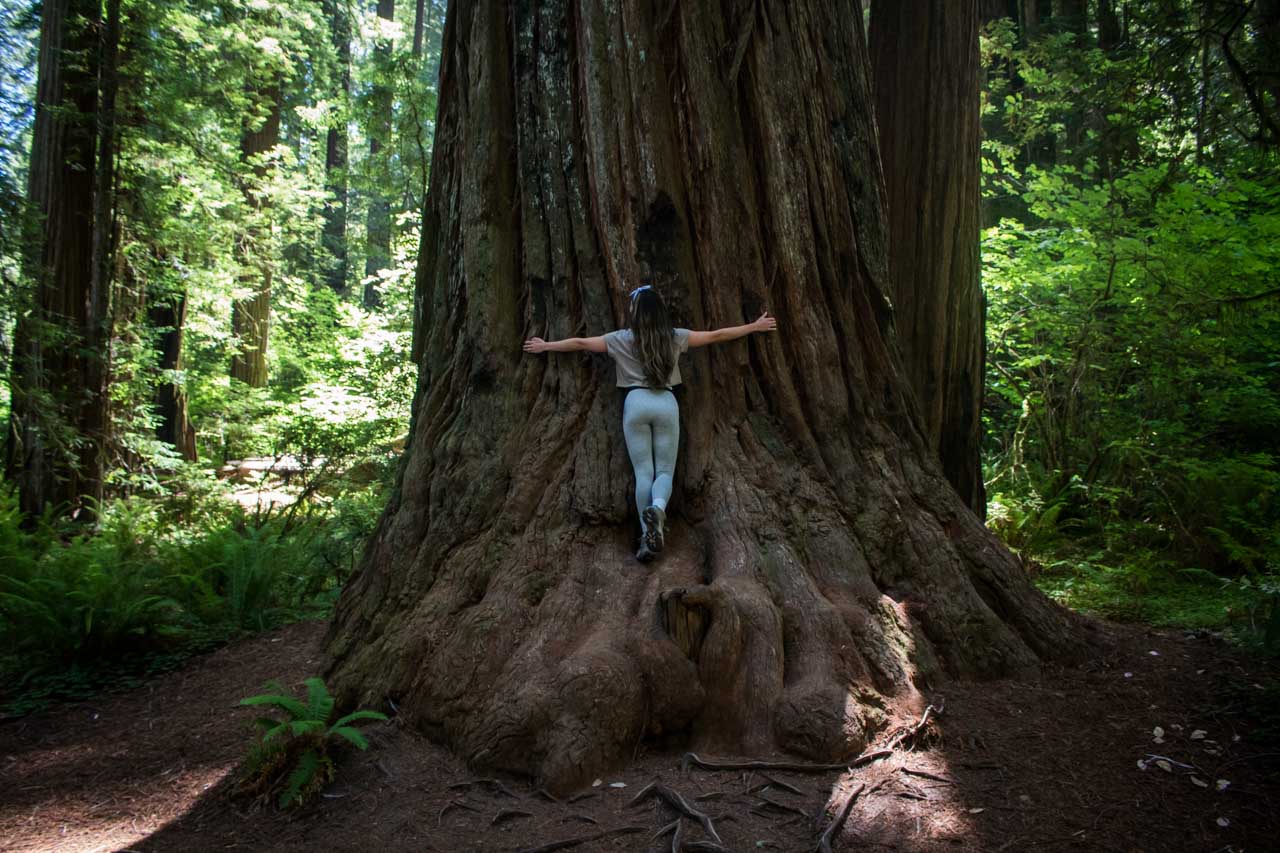
There’s a lot more than redwoods to be discovered here, though. In addition to the coastal redwood forests, the parks preserve huge expanses of prairie, oak forests, wild rivers and streams, and almost 40 miles of spectacular coastline.
Wildlife abounds in these pristine forests, coasts and grasslands, and is often seen from the many hiking trails in Redwood National and State Parks. High-profile animals range from Chinook salmon and Steller’s sea lions to black bears, Roosevelt elk, mountain lions and river otters.
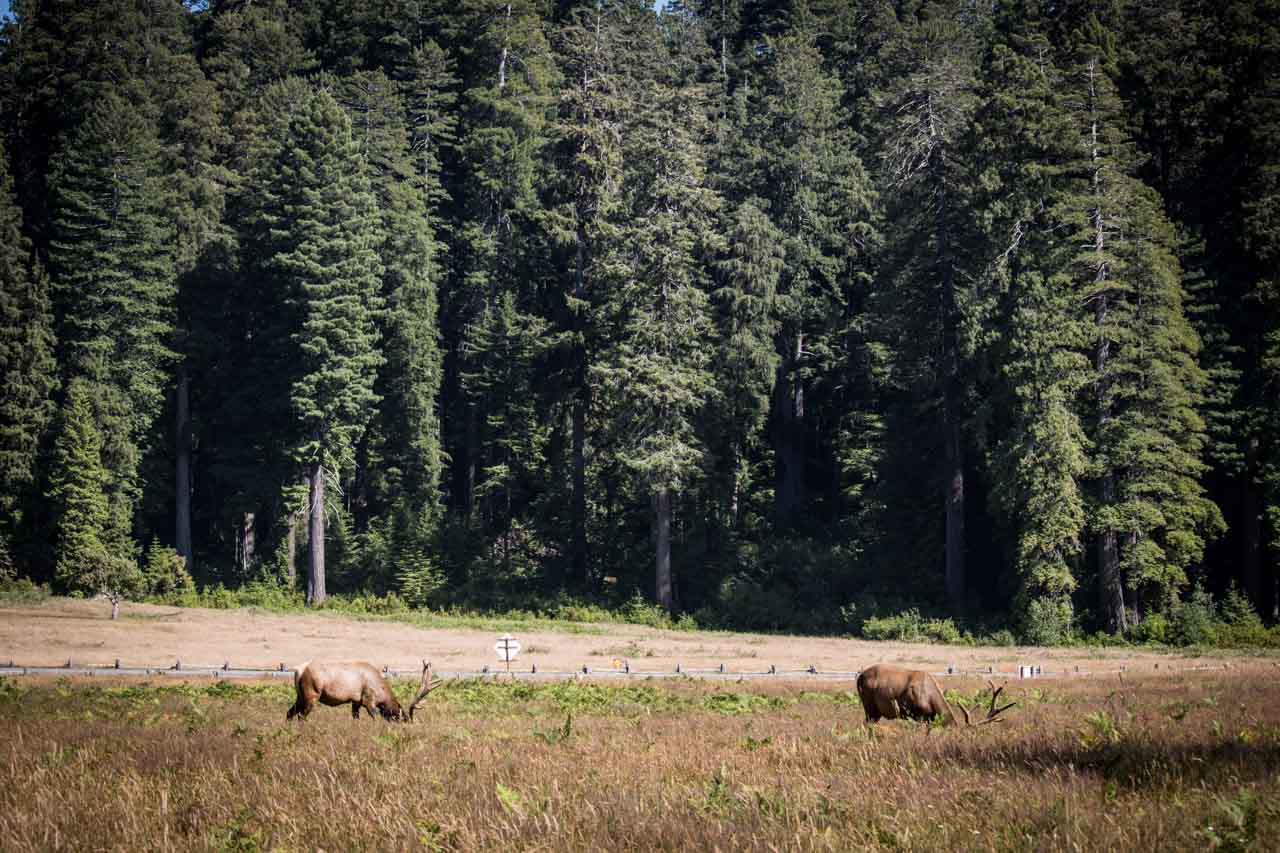
The abundance of animals in Redwood National and State Parks, combined with its extraordinary flora, is a main reason this is a UNESCO World Heritage Site.
Popular activities include the classics, such as camping and hiking, but also road cycling on the Newton B. Drury Scenic Parkway and other park roads.
If you’re camping, I strongly recommend the Gold Bluffs Beach Campground, which is my all-time favorite national park campground.
Additionally, Redwood is also one of very few U.S. national parks where backcountry mountain biking is allowed.
Lassen Volcanic National Park, Northern California
- Highlights: Volcanic landscapes, including all four types of volcanoes on Earth, hydrothermal areas, stargazing and hiking
- How long to stay: 3 days
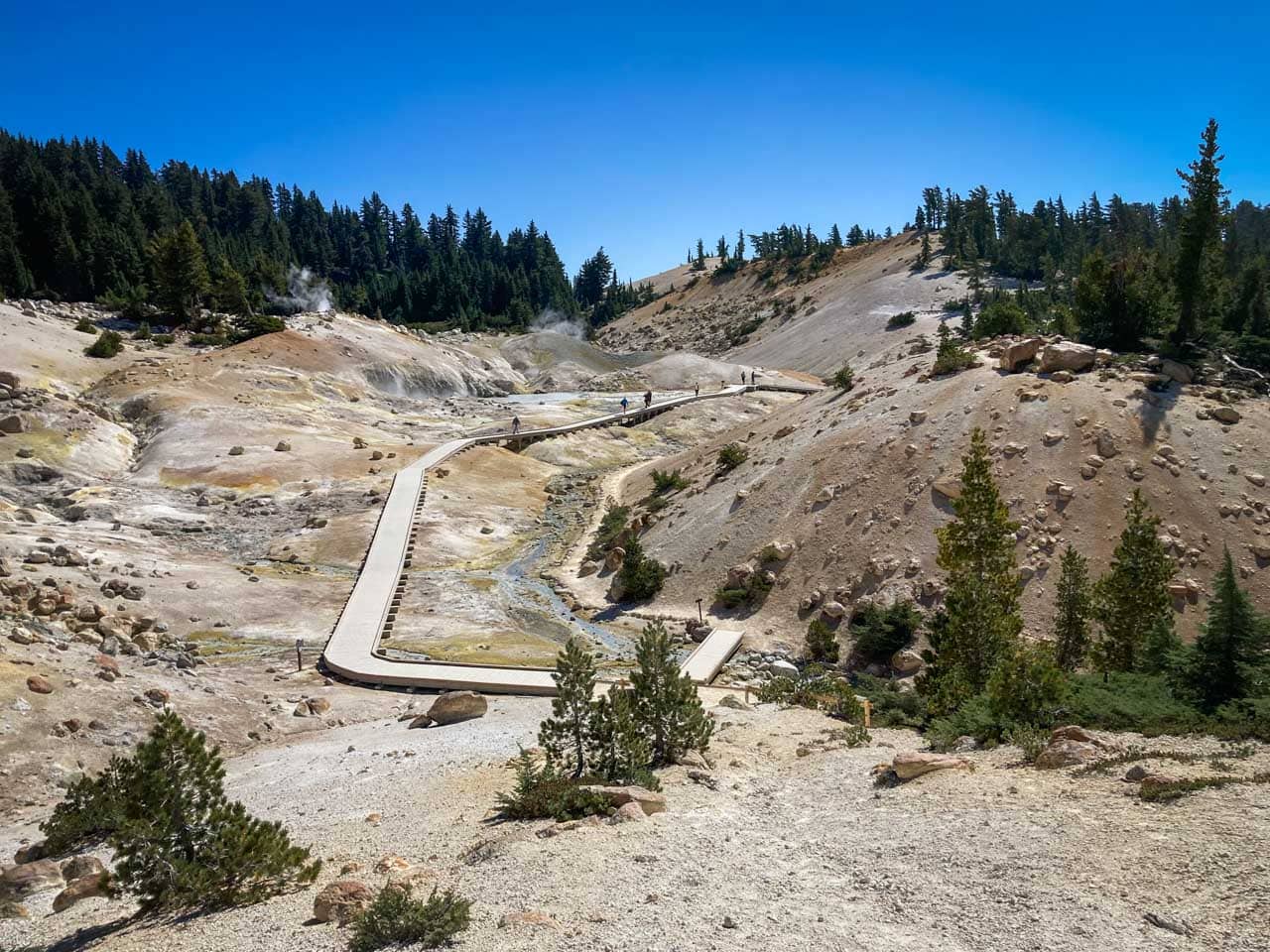
Situated at the meeting point of the Great Basin desert, the Sierra Nevada mountains and the volcanoes of the Cascade Range, Lassen Volcanic National Park offers natural thrills unlike anywhere else in California.
Just over 500,000 people visit Lassen Volcanic annually, making it one of the quietest national parks in the Pacific Northwest and California.
Lassen Volcanic National Park is a place of shimmering lakes, cinder cones and age-old lava beds. The namesake and star attraction of the park is Lassen Peak, the southernmost active volcano in the Cascade Range.
In fact, Lassen Peak is one of America’s most active volcanoes. It’s also the biggest plug dome volcano on the planet, a massive natural landmark surrounded by many smaller volcanoes, fumaroles, boiling mud pools, pristine lakes, hot springs and wildflower-filled meadows.
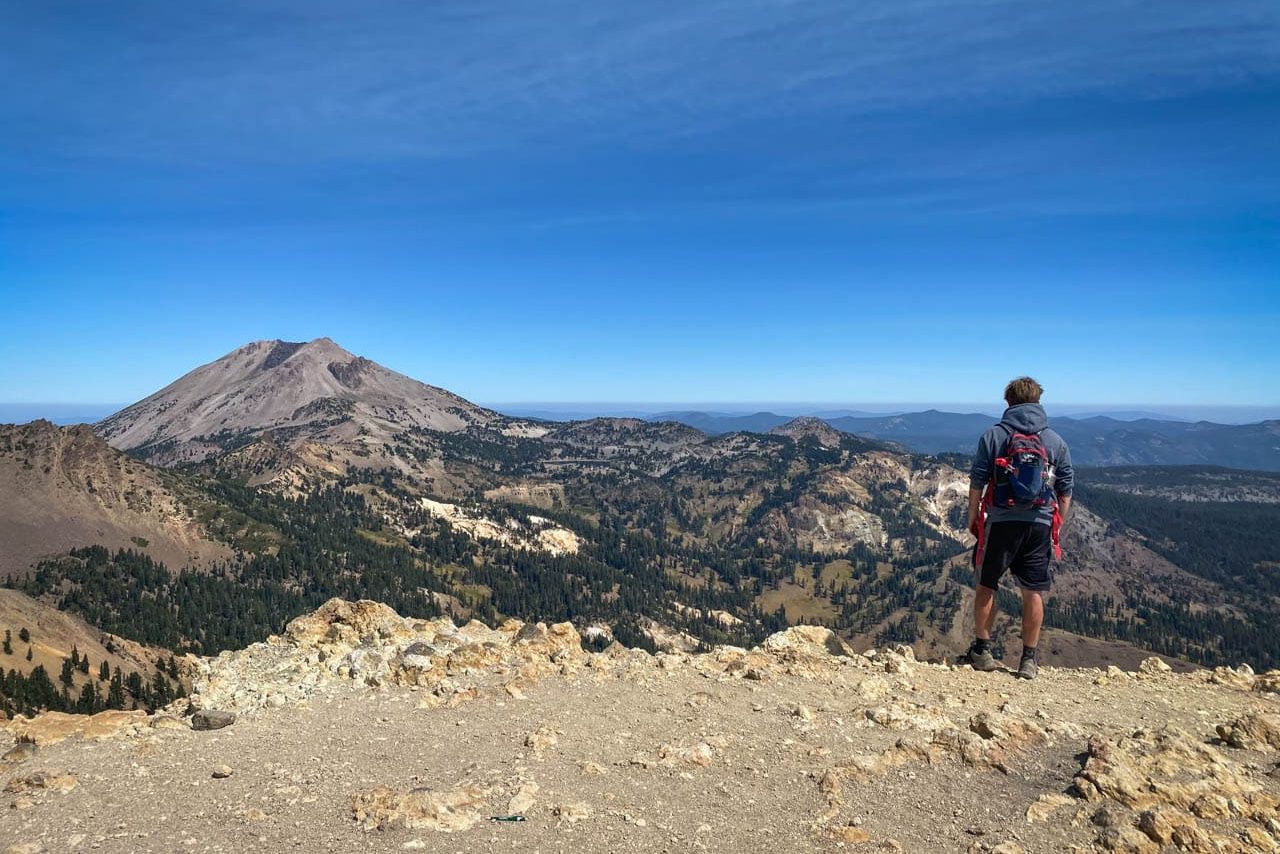
This park is exceptional for various reasons, but the most interesting one is that you’ll find every existing type of volcano here. Composite, plug dome, cinder cone and shield volcanoes are all present in this underrated park in the very southern part of the Pacific Northwest.
Because of that exceptional volcanic diversity, Lassen Volcanic National Park is the only American national park that comes (relatively) close to Yellowstone in terms of hydrothermal features.
There’s plenty of great camping, boating, cycling and hiking in Lassen Volcanic National Park. Additionally, the night sky is amazing, too.
Moreover, the park is also open in winter, offering all kinds of fun winter adventures.
Lava Beds National Monument, Northern California
- Highlights: A massive shield volcano, Native American rock art, hundreds of caves, colorful dunes, and desert landscapes
- How long to stay: 1 day
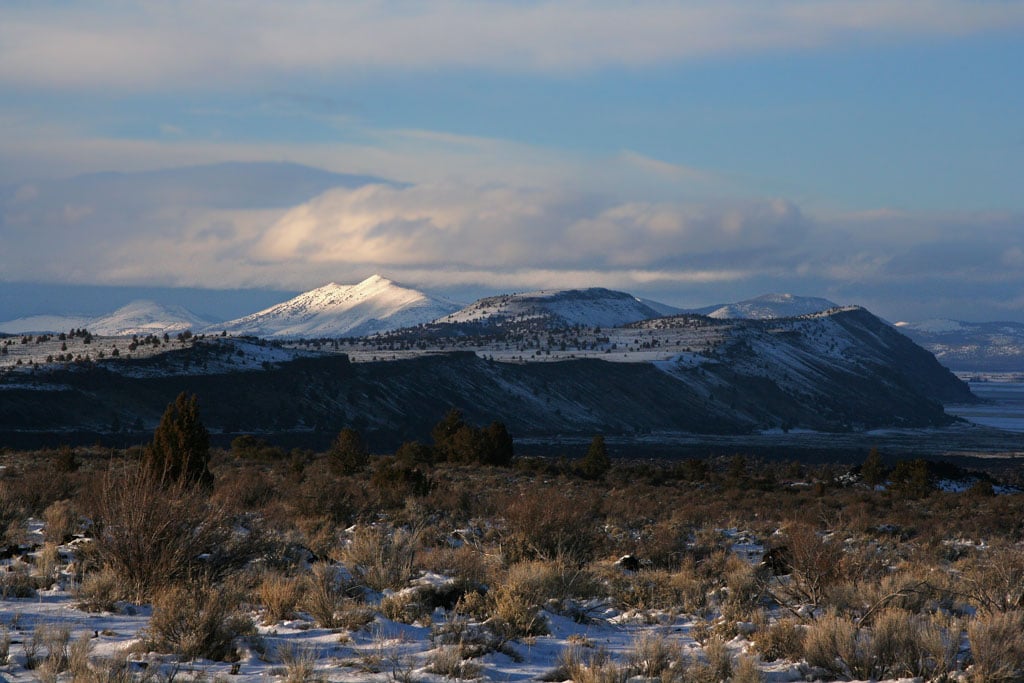
Arguably the least known of all these Pacific Northwest parks, Lava Beds National Monument lies in northeastern California.
This is yet another volcanic park in the Cascade Range, home to Medicine Lake Volcano, a massive shield volcano with a surface area of over 770 square miles (2,000 km2). In terms of sheer volume, it’s the biggest volcano in the Cascades!
Volcanic eruptions have occurred on and off for 500,000 years here. Unlike Mount St. Helens, however, these eruptions were fairly gentle, covering the flanks of the volcano by layer after layer of basaltic lava.
These geological events created a landscape of various volcanic features.
At Lava Beds National Monument, which occupies the volcano’s northeastern side, you’ll find no fewer than 800 caves, historic battlefields, spectacular high desert wilderness and Native American rock art sites.
You can visit caves like Crystal Ice Cave and Fern Cave, go for scenic drives and hikes, and camp at one of the Pacific Northwest’s most underrated National Park Service units.
Lava Beds is key destination on the National Park Service’s fantastic Circle of Discovery Tour. This scenic loop drive around southern Oregon and northern California takes in the region’s seven NPS sites, including above-mentioned Crater Lake, Oregon Caves, Lassen Volcanic and Redwood, too!
Pacific Northwest National Parks, Monuments & Forests Map
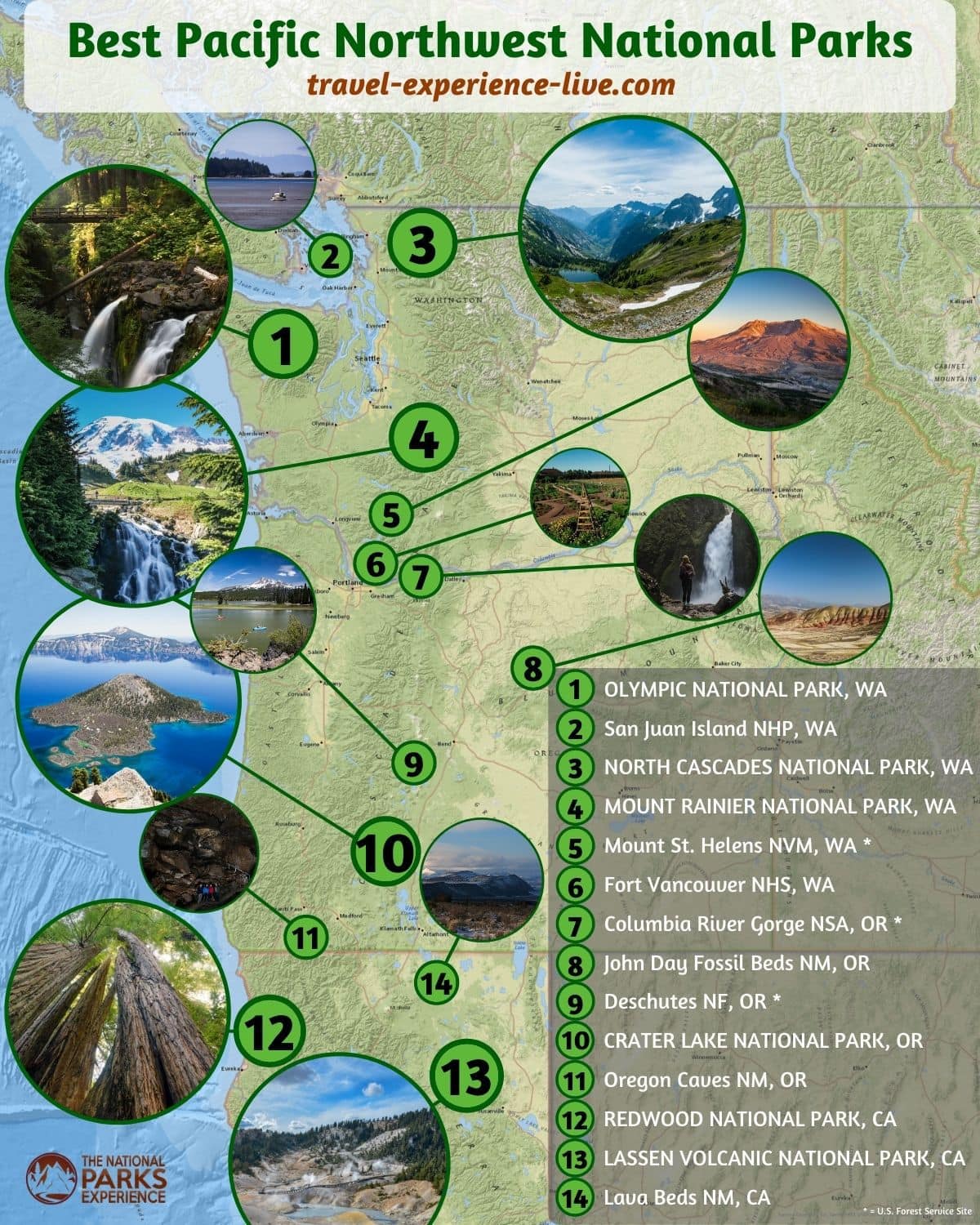
Suggested Pacific Northwest National Parks Road Trip Itineraries
You’re free to connect these amazing national parks in the Pacific Northwest as you want.
Generally speaking, however, there are two main clusters of parks in the region: (1) the parks around Seattle in northern and central Washington, and (2) the parks in southern Oregon and northern California.
You can either start this epic road trip in Seattle and finish in Portland, or pick Portland as both your start and end points.
For a loop drive, I recommend Portland because it is roughly in the middle of the Pacific Northwest region.
Additionally, my suggested Portland itinerary also allows you to drive Route 101 along the coasts of both Washington and Oregon. This is a phenomenal bucket list-worthy drive.
Feel free to play around with possible itineraries, though!
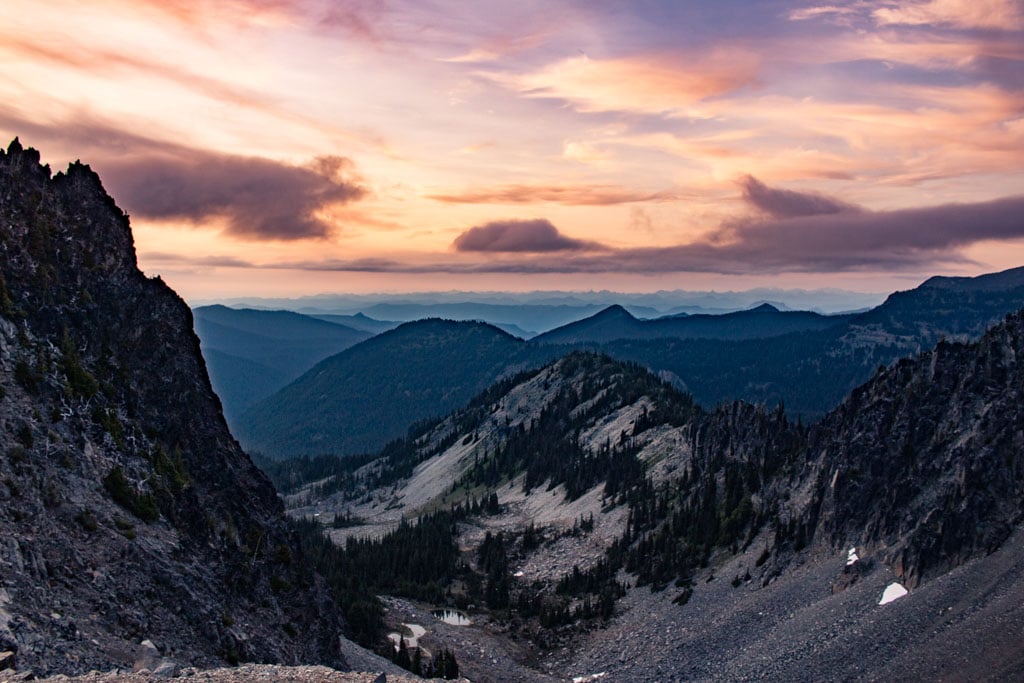
One Way: From Seattle to Portland
- Olympic National Park, WA
- San Juan Island National Historical Park, WA
- North Cascades National Park, WA
- Mount Rainier National Park, WA
- Mount St. Helens National Volcanic Monument, WA *
- Fort Vancouver National Historic Site, WA
- Columbia River Gorge National Scenic Area, OR *
- John Day Fossil Beds National Monument, OR
- Deschutes National Forest, OR *
- Crater Lake National Park, OR
- Lava Beds National Monument, CA
- Lassen Volcanic National Park, CA
- Redwood National Park, CA
- Oregon Caves National Park, OR
- (Pacific Coast Highway Route 101 north to Portland)
* = Not a National Park Service site, but managed by the U.S. Forest Service
Loop: From Portland to Portland
- Fort Vancouver National Historic Site, WA
- Mount St. Helens National Volcanic Monument, WA *
- Mount Rainier National Park, WA
- North Cascades National Park, WA
- San Juan Island National Historical Park, WA
- Olympic National Park, WA
- (Pacific Coast Highway 101 south through Washington and Oregon)
- Oregon Caves National Monument, OR
- Redwood National Park, CA
- Lassen Volcanic National Park, CA
- Lava Beds National Monument, CA
- Crater Lake National Park, OR
- Deschutes National Forest, OR *
- John Day Fossil Beds National Monument, OR
- Columbia River Gorge National Scenic Area, OR *


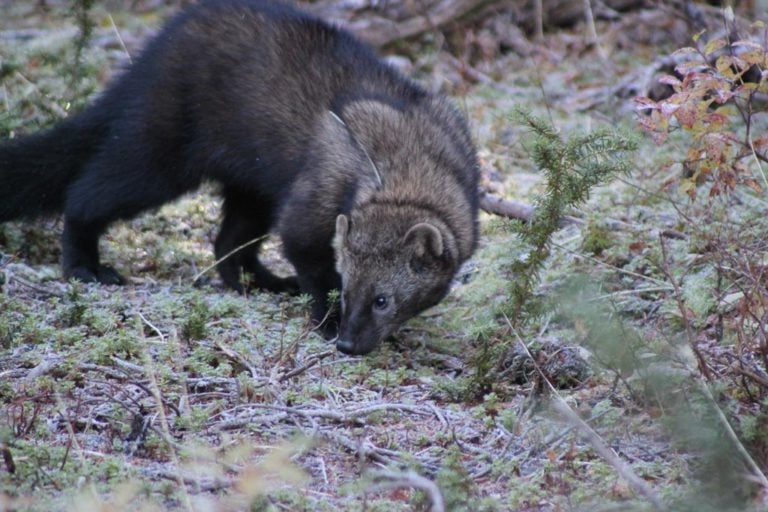


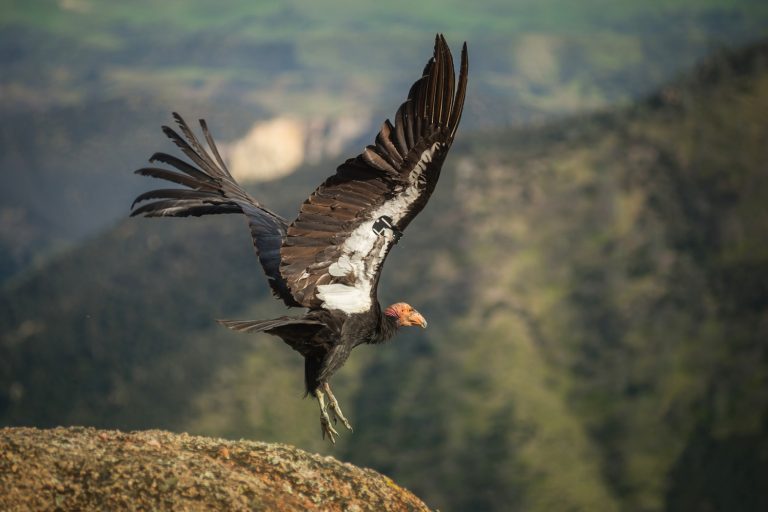

One Comment